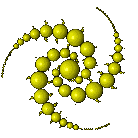Gobierno de la ciudad de Buenos Aires
Hospital Neuropsiquiátrico
"Dr. José Tiburcio Borda"
Laboratorio de Investigaciones Electroneurobiológicas
y
Revista
Electroneurobiología
ISSN: ONLINE 1850-1826 - PRINT 0328-0446

The Biological Psychology of José Ingenieros,
some biographical points, and
Wilhelm Ostwalds (Nobel Prize Chemistry, 1909)
Introduction to the 1922 German edition
by
Lazaros C. Triarhou
Professor of Neuroscience and
Chairman of Educational Policy,
University of Macedonia,
Thessalónica 54006, Greece
Contacto / correspondence: triarhou[-at]uom.gr
and
Manuel del Cerro
Professor Emeritus of Neurobiology
& Anatomy and Ophthalmology,
University of Rochester,
Rochester, New York 14642, USA
Electroneurobiología 2006; 14 (3), pp. 115-195; URL
<http://electroneubio.secyt.gov.ar/index2.htm>
Copyright
© junio 2006 Electroneurobiología. Esta texto es un artículo de
acceso público; su copia exacta y redistribución por cualquier medio están
permitidas bajo la condición de conservar esta noticia y la referencia completa
a su publicación incluyendo la URL (ver arriba). / This is an Open Access
article: verbatim copying and redistribution of this article are permitted in
all media for any purpose, provided this notice is preserved along with the
article's full citation and URL (above).
Received: 31 May 2006
Accepted: 30 June 2006
Printing this file does not keep original formats and page
numbers. You can download a .PDF (recommended) or .DOC
file for reading or printing, either from here or / Puede obtener un archivo .PDF (recomendado) o .DOC
para leer o imprimir este artículo, desde aquí o de
<http://electroneubio.secyt.gov.ar/index2.html
SUMMARY: One of the earliest recorded works in Biological
Psychology was published in 1910 by Argentinian psychiatrist José Ingenieros (1877-1925),
Professor of Experimental Psychology at the Faculty of Philosophy and Letters
of the University of Buenos Aires. Ingenieros, a multifaceted personality and
prolific author and educator, has been considered a luminary for young
generations, ahead of his time, and was famous for his lapidary aphorisms.
Physician, philosopher and political activist, he was the first psychologist
who tried to establish a comprehensive psychological system in South America.
His long list of publications includes 484 articles and 47 books, which are
generally categorized in two periods: studies in mental pathology and
criminology (1897-1908) and studies in philosophy, psychology and sociology
(1908-1925). Some of his books continue to be published and to be best-sellers
in the Spanish-speaking world; however, his works were never particularly
available to English-speaking audiences. In the present study we present an
overview of Ingenieros life and work, and an account of his profoundly
interesting work Principios de Psicología Biologica, in which he
analyzes the development, evolution and social context of mental functions. It
is a hope, eighty years after his death, to bibliographically resurrect this
ardent champion of reason in the English biomedical and psychological
literature. We also provide the original German and an English translation of
the Introduction contributed by Nobel laureate Wilhelm Ostwald (1853-1932) to
the 1922 German edition of Ingenieros Biological Psychology, pertinent to the
energetic principles Ingenieros adopted and the study of Psychology as a
natural science.
![]()
1. Introduction


Fig. 1. José Ingenieros (1877-1925). Portrait from cover of
special issue of Nosotros (Editorial, 1925b). The signature in the lower
frame is from the dedication of doctoral thesis by Ingenieros to his friend
Emilio Zuccarini.
José Ingenieros (Fig. 1), one of
Argentinas estimable intellectuals, continues to be a highly read author in
Latin America to this day. Dubbed by del Forno (1950) luminary of a
generation (Fig. 2), Ingenieros has illuminated with his ideas the way to
generations of intellectuals, and continues doing so today. The scope of the
present study, a different version of which has already been published
(Triarhou and del Cerro, 2006) is two-fold. First, to introduce to the English
biomedical literature this champion of reason, at a time when the light of
reason appears pretty dim on much of a daemon-haunted world (Sagan, 1996);
second, to rediscover one of his earlier works, the Principles of Biological
Psychology (Principios de Psicología Biológica) (Ingenieros,
1913a), dating back to 1910 (Ingenieros, 1910b). That work went through six
editions in Spanish (Ingenieros, 1916a, 1919, 1937, 1946), and was also translated
in French (Ingenieros, 1914a) and German (Ingenieros, 1922a). Being the first
effort in South America to attempt to establish a comprehensive psychological
system, the work places special emphasis on the biological basis of mental
phenomena.
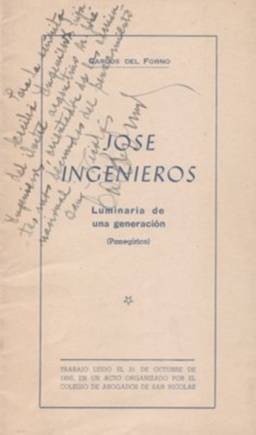
Fig. 2. Front page of lecture by del Forno (1950),
with handwritten dedication to Ingenieros daughter Cecilia.
Although it is not within the
scope of this article to provide a comprehensive review of the evolution of the
field of Biological Psychology as a discipline there are numerous books and
papers which do that (e.g. Reed, 1997; Rosenzweig et al., 1999; Birbaumer and Schmidt, 2003; Schandry, 2003) we
nonetheless note two landmark publications from two other pioneers in the brain
sciences. In a remarkable confluence, 1895 was an annus mirabilis for
coupling psychology with neurohistology, having seen the light of two independently
conceived works on neurobiological schemes of mental phenomena: Cajals
Conjectures on the anatomical mechanism of ideation, association and
attention (Ramón Cajal, 1895), and Freuds posthumously published theoretical
treatise Project for a Scientific Psychology (Freud, 1966).
In a striking convergence of
ideas, Freud, like Cajal, in the wake of certain theory of sleep being caused
by brain cells' amoeboidism, postulated that learning might produce prolonged
changes in the effectiveness of the connections between neurons and that such changes
could subserve a mechanism for memory. Updated, this view is still entertained
by neuroscientists as Eric Kandel (1981). Moreover, Freud (1966), in a manner
relevant to the scope of Ingenieros Psychology, wrote: The intention is to
furnish a psychology that shall be a natural science: that is, to represent
psychic processes as quantitatively determinate states of specifiable material
particles, thus making those processes perspicuous and free from
contradiction. According to Barondes (1993), Freud had in mind that the units
of such a natural science, the ‛specifiable material particles, would be
neurons, the cells of the nervous system, whose structure and organization he
had helped elucidate in his extensive neuroanatomical studies (Triarhou and del
Cerro, 1985; Shepherd and Erulkar, 1997; Guttman and Scholz-Strasser, 1998;
Pearce, 2003; Ochs, 2004).
In the aftermath of the fin du
siècle physicochemical and neurobiological repercussions on psychology,
books on Biological Psychology develop and expand ideas present in the
writings of
José Ingenieros. In the German literature there are the works of Lungwitz
(1925), Bleuler (1932) and Leonhard (1961), and the more modern accounts of
Birbaumer and Schmidt (1989), Köhler (2001), Gall et al. (2002), and Schandry (2003). In the French literature, one finds the works of Delmas-Marsalet (1961) and
Pellet (1999). Likewise, in the English literature, one encounters works by McDowall
(1941), Kimble (1973), Groves and Schlesinger (1979), Kalat
(1980), Hall (1983), Klein (1999), Rosenzweig et
al. (1999), Wickens (1999), Toates (2001),
Martin (2003), Pinel (2003), and Weiner et
al. (2003).
In Ingenieros Principios
we come upon the scheme of a synthetic system of psychology weaved from
positivist philosophy with a heavy emphasis on the science of experience
and the principles of physical chemistry, and inditing the phenomena of psychic
functioning at the ontogenetic, evolutionary and social levels, while leaving
some room for metaphysics. At a time when Psychology was still closely
associated with Philosophy, from which it had sprung or which, according to
another view, it had actually spawned (Reed, 1997) efforts to draw it towards
the principles of biological energetics and biological generative processes
should be welcomed with todays perspective.
It is refreshing, to say the
least, to find a clear proposition for psychology as a natural science,
presented almost a century ago by a highly learned and copious writer of opera
that span from politics to philosophy, through the way of neurology,
psychiatry, psychology, criminology, history, critical essay, morals and
sociology. In our opinion, Ingenieros deserves a place in the tradition of
physician-psychologists quod vide Ernst von Feuchtersleben, Wilhelm
Wundt, William James, Ivan Pavlov, Vladimir Bechterew, Sigmund Freud, Eugen
Bleuler, Alfred Adler, Carl Gustav Jung, Jean Piaget and the akin all the way
to Eric Kandel who have made valuable contributions to the emergence of
psychology as a biological science during its formative years in the 19th and
in the 20th centuries. We trust that the present report and its predecessor
(Triarhou and del Cerro, 2006) may signal the proper historical placement of Principios
among key historical works in Biological Psychology.
We provide the complete synthetic
conclusions of Ingenieros from the first Spanish edition (Ingenieros, 1913a)
and a translation of Ostwalds introductory commentary from the German edition
(Ingenieros, 1922a). We also provide some biographical data on Ingenieros and
Wilhelm Ostwald. Ostwald was the German chemist and philosopher, Nobel Prize
winner who contributed the Introduction to the German edition of Principios, and whose physical theories
Ingenieros refers to in five of the ten chapters of his book.
2. Life and work of José Ingenieros
(1877-1925)
2.1. Biographical note
Numerous biographies of José
Ingenieros have been published (Barreda, 1925; Colmo, 1925; de la Mendoza, 1925;
Fernández, 1925; Bermann, 1925; 1926; 1929; 1933; Mouchet, 1925; Mouchet and Palcos, 1925; Ramos, 1925; Schiaffino,
1925; Zavalla, 1925; Riaño Jauma, 1933; del Forno, 1950; Bagu, 1953; 1963; Ponce, 1957;
Torchia-Estrada, 1967; Gottheld, 1969a; 1969b; Laplaza, 1977; Ardila 1989;
Rodriguez Kauth, 1996; Díaz Araujo, 1998; Murillo-Ramos, 2001). Furthermore, Ingenieros daughter, writer Delia
Ingenieros de Rothschild (pseudonym Delia Kamia), produced an Anthology
(Kamia, 1961), which also contains a biographical note. A synoptic timeline of
Ingenieros life and corresponding world events is given in Table 1.
José Ingenieros was one of two
sons Pablo was the other of Salvador (don Salvatore) Ingegnieros
(1848-1922) and Mariana (doña Ana) Tagliavía, a family including Tagliavías
father José of revolutionary tradition and friends of Mazzini, Garibaldi, and
Malatesta. Although there is not a perfect agreement in the available records
(reviewed in detail by Díaz Araujo, 1998), the most likely scenario is that
Giuseppe Ingegnieros was born on 24 April 1877 at Vía Candelaí № 45,
Palermo, Sicily (Fig. 3). The original last name of the family, Ingenieros, was
Spanish in origin, and had been semi-italianized to Ingegnieros at the time
of emigration to Sicily prior to Salvadors birth there; it was
re-castillianized by José Ingenieros after 1912 for his European
publications.
|
|
Ingenieros
life and work
|
Events in science and
the world scene
|
|
1900 |
Graduates from Medical School; H.G.
Piñero establishes Psychological Laboratory at University of Buenos Aires |
Freud publishes Die Traumdeutung; Max Planck develops quantum
theory; Lewandowsky coins term blood-brain barrier |
|
1902 |
Founds Archivos de
Criminología, Medicina Legal y Psiquiatría |
Kennelly and Heaviside discover ionosphere; Cuba becomes independent
from Spain |
|
1903 |
Publishes Simulación de
la Locura and La Simulación en la Lucha por la Vida |
De Vries discovers mutations in plants;Wright brothers make first successful flight; Panama gains independence |
|
1904 |
Appointed Professor of Psychology; awarded
National Academy of Medicine Gold Medal |
Pavlov awarded Nobel Prize in Medicine; Russo-Japanese War (1904-1905) |
|
1905 |
Travels to Europe (1905-1906). Entertains
racist views about the poor, the Black, etc., later rejected. |
Einstein publishes Special theory of
relativity; Norway peacefully gains independence from
Sweden |
|
1906 |
Returns
to Buenos Aires |
Cajal and Golgi awarded Nobel Prize in
Medicine; Jakob
starts modelling brain higher functions on the interference of stationary
waves; Sherrington publishes Integrative action
of the nervous system |
|
1907 |
Founds
Instituto de Criminología de la Penitenciaría Nacional |
Mauritania makes maiden voyage from Liverpool to New York; Russian Alexander Scriabin composes Le Poème
de lExtase |
|
1908 |
Professor
or Experimental Psychology; forms Sociedad de Psicología; publishes Sociología
Argentina |
Austrian Gustav Mahler composes ninth
symphony; Salvador Allende born in Valparaiso |
|
1909 |
Elected President of Argentina Medical
Association |
Ostwald awarded Nobel Prize in Chemistry; Brodmann publishes Vergleichende
Lokalisationslehre der Großhirnrinde; Freud visits Clark University |
|
1910 |
Separate
chapters of Psicología Genética appear in Argentina Médica;
article Psicología Biologica appears in Archivos |
William James dies in Chocorua, N.H.; Titchener publishes A text-Book of
Psychology; Mexican Revolution (1910-1917); Portugal proclaimed a Republic; Tolstoy dies near Caucasus |
|
1911 |
Publishes
Psicología Genética; self-exile to Europe (1911-1914) |
Cajals Histologie du système nerveux published
in Paris; Jakob publishes a brain circuit better known
on Papez' 1937 description; Bleuler
coins term schizophrenia |
|
1912 |
Visits
European Universities |
Balkan
Wars (1912-1913); Titanic sinks |
|
1913 |
Principios
de Psicología Biológica and El Hombre Mediocre published in Madrid |
Watson
publishes article in Psychological Review; Albert Schweitzer builds Lambaréné Hospital in
Gabon |
|
1914 |
Marries Eva Rutenberg; Principes de
Psychologie Biologique published in Paris |
Cajal
completes publication of Degeneration
and regeneration in
Madrid with support from Spanish physicians of Argentina; outbreak
of WW I |
|
1915 |
Founds
Revista de Filosofía |
Romain Rolland awarded Nobel Prize in
Literature; Lusitania torpetoed by German U-boat off coast of Ireland |
|
1916 |
Attends
Washington, D.C. conference; publishes Criminología; fifth edition of Principios
de Psicología in Buenos Aires |
Einstein publishes General theory of
relativity; Argentinian composer Alberto Ginastera born; Britannic
sunk after striking mine in Aegean Sea |
|
1917 |
Professor
of Ethics; publishes Hacia una Moral sin Dogmas |
DArcy Thompson publishes Growth and form;
Russian Bolshevik Revolution |
|
1918 |
Publishes
Proposiciones Relativas al Porvenir de la Filosofía |
Max Planck awarded Nobel Prize in Physics;
end of WW I |
|
1919 |
Meets
President Hipólito Yrigoyen; sixth (final) edition of Principios de
Psicología published in Buenos Aires |
Watson publishes Psychology from the
standpoint of a behaviorist; Treaty of Versailles signed |
|
1921 |
Publishes
Los Tiempos Nuevos |
Einstein awarded Nobel Prize in Physics;
Argentinian composer Ariel Ramírez born |
|
1922 |
Father
dies. Writes Las Fuerzas Morales. Prinzipien der Biologischen
Psychologie published in Leipzig |
Neurobiologist Fridtjof Nansen awarded Nobel
Peace Prize; Jacinto Benavente awarded Nobel Prize in Literature; U.S.S.R.
established |
|
1925 |
Travels to México and France; dies in the
morning of 31 October from complications of meningitis |
von Economo and Koskinas publish Die
Cytoarchitektonik der Hirnrinde des erwachsenen Menschen, paying homage
to Cajal, Kaes, and Christfried Jakob |
Table 1. Timeline
of events in José Ingenieros life, and parallel events of relative interest in
neurobiology, science and the international scene during the first quarter of
the 20th century.
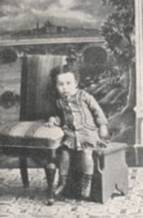
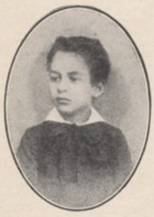
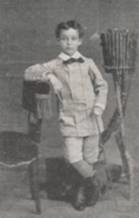
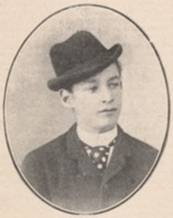
Fig.
3. Ingenieros as a child at ages 3, 4, 7 and 11,
photographed, respectively, in years 1880 (photography by Giannone, Palermo),
1881, 1884 (photography by J. Vigouroux, Montevideo) and 1888. (Sources: first
and third photographs, Fernández, 1925; second and fourth photographs, P.
Ingegnieros, 1927).
The family moved from Italy to
South America soon after Buenos Aires had
become the Federal Capital in 1880.
According to brother Pablo, José received his first instruction in Montevideo,
Uruguay in 1881 at the age of four years (Fig. 3), under the direction of the
notable educationist Aurelia Viera (P. Ingegnieros, 1927). In 1885 he was
enrolled in the Instituto Nacional, directed by educationist Pedro Ricaldoni.
The family settled in Buenos Aires in September 1885. Already a child prodigy
at age seven (Fig. 3), Ingenieros completed his primary education at the
Catedral al Norte (not yet an elegant quarter) and in 1888 was enrolled in
the Colegio Nacional Central de Buenos Aires, obtaining the baccalaureate in
1892. His father, a journalist, had a book shop, and urged his son José to
read, write, correct proofs and translate into English, Italian and French from
early on; he was already translating Petrarca at eight.
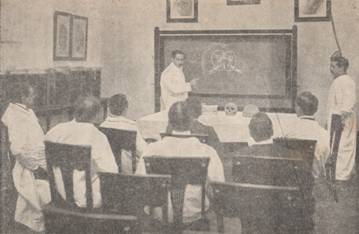
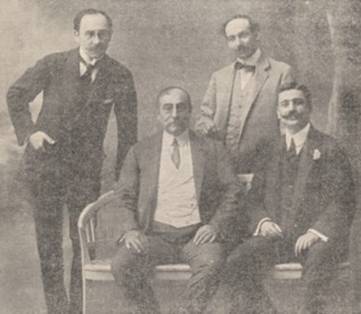
Fig.
4. (Upper) Ingenieros giving a neurology lecture in
San Roque Hospital, today Ramos-Mejía, in 1903 (from P. Ingegnieros, 1927). (Lower)
A 1910 photo with colleagues José María Ramos-Mejía, Francisco de Veyga and
Lucio V. López (from Fernández, 1925).
In 1893 Ingenieros entered the
University of Buenos Aires. In 1897 he obtained a degree in Pharmacy, and in
1900 he graduated from the Medical School. As a medical student, he
collaborated with the review Atlántida. In 1898, he had the opportunity
of meeting José María Ramos-Mejía, who started as being his professor and with
whom he ended up maintaining a close friendship (Fig. 4).
Ingenieros married Eva Rutenberg
in 1914 (Fig. 5); they had four children, Delia, Amalia, Julio and Cecilia.
Nevertheless, he did not resign thereby all of his habits as a bachelor. Poet
Eduardo Moreno (1906-1997) recalled, «A review of my teen years: listen, I
already frequented the dancehalls around Plaza Italia and one night I saw José
Ingenieros and also a man of letters, Alberto Ghiraldo, entering a local called
"Palermo" located one block from Santa Fe Avenue. They were going to
that venue to dance tango. They, as well as many others at that time, had a
passion for tango. Tango was not plebeian, it did not belong only to the
neighborhood or the tenement houses. That is something to highlight.»
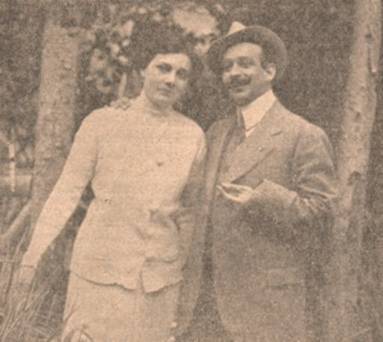
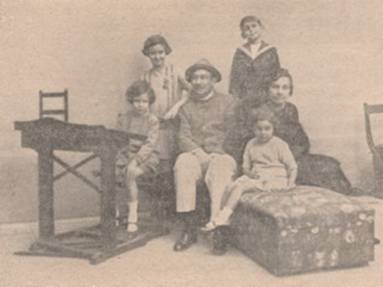
Fig. 5. (Upper) Ingenieros in 1913 in
Switzerland during his engagement to Eva Rutenberg (from Barreda, 1925). (Lower)
With wife Eva and four children in April 1925, before his trip to Europe and
México (unpublished photograph provided by Caras y Caretas magazine to
Barreda, 1925).
José Ingenieros died at 7:00 in
the morning of 31 October 1925 at Calle Cangallo
1544, Buenos Aires, at the age of
48 years (Fig. 6). Based on the observed symptoms, which had been related by
Ingenieros himself, medical colleagues of the time suspected a severe
meningitis that resisted treatment with an eventual loss of consciousness,
result of an earlier sinusitis, frontal neuritis and nasal abscess. With his
last act culminated Ingenieros anticipated desire in Las fuerzas morales
(published posthumously), to have the happiness of dying before aging. His
wife Eva survived him by 30 years; their young daughter passed away in 1995 and
the eldest in 1996.

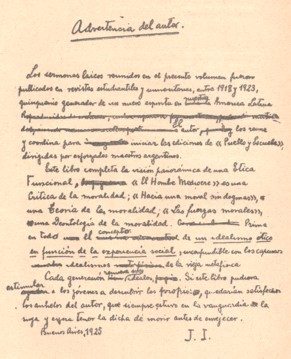
Fig. 6. Last portrait of José Ingenieros (left),
a few days before his death in October 1925 at the age of 48 years (from P.
Ingegnieros, 1927); the last manuscript of Ingenieros
(right), the prologue written in 1925 for Las fuerzas morales (from
Editorial, 1925b).
Among the many commemorations for Ingenieros,
at least three journals dedicated special issues posthumously (Editorial, 1925a; Editorial, 1925b; Editorial, 1933). To honor the name of José Ingenieros, the Cultural
Center of the Faculty of Medicine of the
University of Buenos Aires was named after him (Centro Cultural José Ingenieros, Facultad de Medicina, Universidad de Buenos Aires,
Paraguay 2155, Buenos Aires, Argentina, www.fmed.uba.ar/cultura), as well as a popular sector
of the Buenos Aires conurbation, many streets, and cultural associations across
the country.
2.2. Academic
posts
Ingenieros dedicated his first
professional efforts to nervous and mental pathology. He was named Head of the
Clinic of Nervous Diseases (Clínica de Enfermedades Nerviosas) of the Faculty
of Medicine of the University of Buenos Aires. The Laboratory for the Clinic
was located in the insanes' asylum and it was directed by German-born
neuropathologist and neurobiologist Christfried Jakob (who took on Argentinian
citizenship as Christofredo Jakob, 1866-1956). Jakob taught Ingenieros
neurohistological techniques. Ingenieros often attended Jakob's lectures,
worked in the Laboratory, and was also present at the Service of Observation of
the Mentally Ill of Argentinas Federal Police (Servicio de Observación de
Alienados de la Policía Federal Argentina), which he
would head as Director two years later. Ingenieros proposed for the first time to open
outpatient units in public institutions for the treatment of neurasthenia,
hysteria and other diseases that did not require hospitalization, and he held
the view that public hospitals should serve for education and practice. Between 1902 and 1903 he offered courses in Neuropathology and
Clinical Semiology at the Faculty of Medicine (Fig. 4).
In 1904 Ingenieros substituted as
Professor of Psychology at the Faculty of Philosophy and Letters of the
University of Buenos Aires. In 1908 he obtained the Chair of Experimental
Psychology in the Faculty of Philosophy and Letters.
On 30 May 1911 the Governing
Council of the Faculty of Medicine nominated him unanimously from the list of
candidates for the Chair of Legal Medicine. In making the final decision, the
President of Argentina (at the time Roque Sáenz-Peña) vetoed the nomination and
instead appointed the second runner-up. The episode caused Ingenieros to openly
express his anger against the President in a public letter. Ingenieros
considered such an act of interference as government immorality, and treated
Sáenz-Peña as the implied mediocre man in his book El hombre mediocre
(Ingenieros, 1913b; 2001). He distributed his books among friends and
institutions, and moved to Europe in a self-imposed exile between 1911-1914, to
return to Argentina three years later, after Sáenz-Peñas death.
In 1917, due to a temporary
absence of Dr. Rodolfo Rivarola, he occupied the Chair of Ethics, and worked on
developing the definitive form of his book Hacia una moral sin dogmas
(Towards an ethic without dogma) (Ingenieros, 1917). In 1918 he was named
Academician of the Faculty of Philosophy of the University of Buenos Aires. For
this opportunity he prepared as a discourse his Proposiciones relativas al
porvenir de la filosofía (Ingenieros, 1918), a text directed at
transforming philosophical studies. Yet
the meeting was adjourned due to
the University Reform's turmoil, the new academician being received without
reading it. Although Ingenieros did not directly participate in the Reform
Movement, he did give his support to the students, and later, reformist leaders
underscored his intellectual influence in their generation. After World War I
he became Vice Dean of the Faculty of Philosophy and Letters. Ingenieros
resigned all teaching and administrative posts at the University of Buenos
Aires in 1919.
2.3. Travels in the Americas
In 1901 Ingenieros travelled to
Uruguay to participate in the Second Latin American Scientific Congress held at
Montevideo. In 1916 he attended the Second Panamerican Scientific Congress in
Washington, D.C., by special invitation from the Carnegie Endowment for
International Peace. There he presented a paper entitled La Universidad del
porvenir (The University of the future) (Ingenieros, 1916b), which in the
meantime had also been published in Spain by Vértice Editorial, Barcelona. In
1925, in a special invitation from the Mexican government, he visited México
and was named distinguished guest.

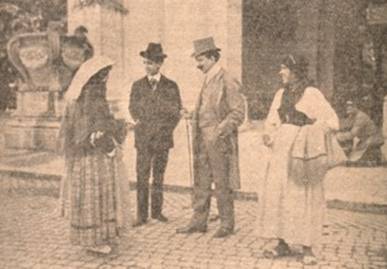

Fig. 7. Ingenieros at Rome, walking through the
Campidoglio's doorway to participate in the 1905 Psychological Congress (upper),
and with novelist Manuel Gálvez (middle) (from P. Ingegnieros, 1927 and
Schiaffino, 1925, respectively). Walking in Paris during the same year (lower)
in the company of cartoonist-caricaturist Pedro Zavalla, known as Pelele (from
Zavalla, 1925).
2.4. Travels to Europe
Ingenieros made three trips to
Europe, when he was 28, 34 and 48 years old. The first trip, between 1905-1906,
was to attend the Fifth World Congress of Psychology in Rome (Fig. 7), where he
chaired the Session on Pathological Psychology. Taking advantage of being in
Europe, he spent time in Spain as well. He visited European Universities,
lecturing on topics in his specialty, and contributed articles to professional
journals (Figs. 8, 9), such as Archives dAnthropologie Criminelle (Ingenieros,
1904a), Revue Neurologique (Ingenieros, 1905a), La Presse Médicale (Ingenieros,
1906a), as well as Nouvelle Iconographie de la Salpêtrière, Revue de
Psychologie, Rivista di Sociologia, Neurological Journal and Prese
Medicala Romana, before returning to Buenos Aires in 1906 (P. Ingegnieros,
1927; Ponce, 1957; Van Der Karr and Basile, 1977).
He compiled the impressions from
his two years in Europe in a series of non-scientific articles in two versions
entitled At the margin of science, which was published in Valencia
(Ingenieros, 1906b), and Crónicas de
viaje (Ingenieros, 1908). The latter work has been criticized by some
undeniable racist portrayals of the poor, the native and negros encountered in the travel's scale ports, which portrayals
Ingenieros later rejected and criticized himself. Rodríguez Kauth (1996) calls
this travel's period a "stage of cognitive dissonance". The first
version includes brief essays, commentaries and discourses, many of which had
appeared in Buenos Aires in the newspaper La Nación, and were
complementing the series of articles also published in Valencia in the book Italy
in science, life and art (Ingenieros, 1905b).
Upon his return to Argentina, he
tried to tie to the high society of Buenos Aires and to join the Jockey Club.
He was not accepted. Some say that a socialist and (outspokenly) atheist was
not what the Jockey Club, the ultimate inner circle of the rich and powerful,
wanted as a fellow member; others, that Ingenieros
had indiscreetly revealed that a relative of a Commission's member had been his
patient.
When the Chair in Legal Medicine
was not granted to him, he went on his second European trip, between 1911-1914:
his self-imposed exile. In the course of that period, he expanded his
scientific studies at the Universities of Paris, Geneva, Lausanne and
Heidelberg, and systematically began to give room to his philosophical
inquietudes. He again spent time in Spain, editing and publishing, among other
works, the 1913 Madrid editions of El hombre mediocre (Ingenieros,
1913c) and Principios de Psicología Biológica (Ingenieros, 1913a).
His third and last European trip
took place in 1925 as a guest of the French Government in order to attend the
festivities marking the centennial of Charcots birth. He returned to Buenos Aires in
September 1925, the month before his demise.
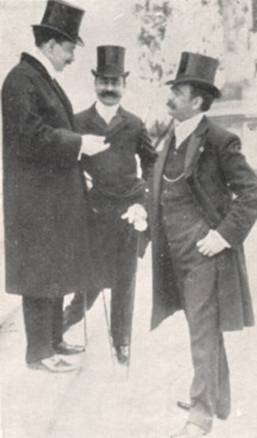

Fig. 8. Ingenieros
in 1905 in Paris with Payo Roqué (left) and in casual conversation with
General Julio A. Roca (right). Pictures tell much more about the man
than any text. For a 28-year old Argentinian to be in Paris, it was an
unequivocal demonstration of personal success. Further, the intellectual,
ultraliberal professor, is chatting with the General former president Roca,
embodiment of the most rancid Argentinian oligarquía (from Colmo, 1925).
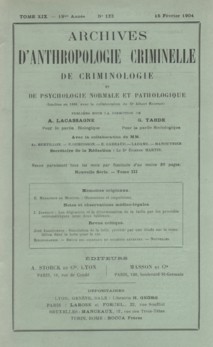

Fig. 9. Frontispiece of French journals where articles
appeared in 1904 and 1906 (Ingenieros, 1904a; Ingenieros, 1906a).
3. Publications
and other intellectual activities
3.1. Scientific journals and
literary works
In 1899 Ingenieros joined the Revista de Criminología Moderna. That same year he was discovered by a would-be
friend, professor and mentor, Dr. Francisco de Veyga (Fig. 4), who designated
him secretary of redaction of La Semana Médica (Medical Weekly), which
would see him as one of its regular collaborators.
In 1900 he reported his work in
Psychopathology and Criminology in a small pamphlet under the title Dos
páginas de Psiquiatría Criminal (Ingenieros, 1900). Another one of his
first publications, shortly after graduating from Medical School, was a famous
critical essay about the book La Ciudad Indiana (The Indian City) by
Juan Agustín García; the essay appeared in Revista de Derecho, Historia y
Letras (Review of Law, History and Letters).
In January 1902, at the suggestion
of de Veyga, Ingenieros co-founded with Ramos-Mejía the journal Archivos de
Criminología, Medicina Legal y Psiquiatría. A bimonthly publication, it was
the official journal of Sociedad de Criminología (Society of Criminology). In 1903 the
title of the journal was changed to Archivos de Psiquiatría y Criminología
Aplicadas a las Ciencias Afines and continued to be published regularly
under the editorship of Ingenieros until December 1913 (Fig. 10). During the
years of his editorship, Ingenieros himself contributed to the journal 90
articles (Ingenieros, 1914b); the topics he covered were diverse, ranging from
the physiology of the cerebellum (Ingenieros, 1905c) to the pathology of
psychosexual functions (Ingenieros, 1910a) and the psychology of genius
(Ingenieros, 1911c). His very first article on Biological Psychology appeared
in 1910 (Ingenieros, 1910b), and all the remaining chapters of the book under
the title Genetic Psychology appeared the following year (Ingenieros, 1911a).
In 1911, Ingenieros also published in the Archivos the first version of
six of the eight chapters of El hombre mediocre (Ingenieros, 1911b).
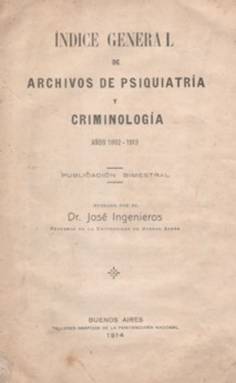
Fig. 10. General index of Archivos de Psiquiatría y
Criminología for 1902-1913, the years that Ingenieros edited the journal.
Articles in the Archivos of
especial interest, by other authors, include those of Argentinian philosopher
and writer Macedonio Fernández (1874-1952) on the problem of genius (Fernández,
1902) and by Christofredo Jakob on the relationship of psychology to cerebral
histology and cortical biology (Jakob, 1911; 1913). Ingenieros also solicited
or reproduced articles by European authors, including one of Cajals classical
essays on the neuron doctrine (Ramón y Cajal, 1907).
In 1913, while in Europe,
Ingenieros announced to Helvio Fernández that he was suspending the publication
of Archivos. Fernández continued the journal as the Revista de
Criminología, Psiquiatría y Medicina Legal, a title maintained from 1916 to
1935, a period in which Jakob published his neurobiological synthesis on the
issue of memory; from 1936 to 1950, the journal became Revista de
Psiquiatría y Criminología (information based on the Catalogues of
Periodical Publications of the National Academy of Medicine of Buenos Aires and
the Library of the School of Medicine of the University of Zaragoza).
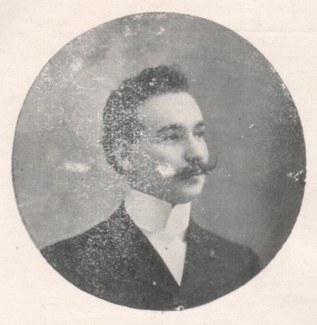
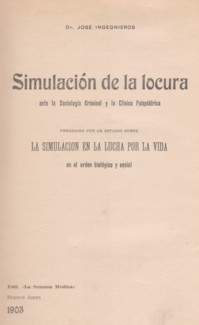
Fig. 11. (Left) Ingenieros in 1904, the year
following publication of La Simulación de la locura (from Colmo, 1925).
(Right) Frontispiece of book resulting from his doctoral thesis
(Ingenieros, 1903). (Next page) 1923
Greek translation by Dr. A. G. Dalezios, Georg I. Vasileiou Publishing House
(Philosophical and Social Library, no. 15), Athens.
In 1904 the National Academy of Medicine
of Buenos Aires awarded Ingenieros the gold medal (Premio de la Academia de
Medicina) for best medical work published nationwide, for his book La
simulación en la lucha por la vida, which had formed his doctoral thesis
where he affirmed that the struggle of
the classes is one of the manifestations of the struggle for life and Simulación de la locura. Those two works,
included in a single 500-page long book (Fig. 11), probably the first South
American book on feigned insanity, were published by La Semana Médica
(Ingenieros, 1903). An Italian translation of the work was published a year
later in Torino (G. Ingegnieros, 1904). A
critical review of the work consisting of the synthetic conclusions of the
two studies appeared in French (Ingenieros, 1904a) that same year (Fig. 9). A
Greek translation of the book was published in Athens two decades later
(Ingenieros, 1923).
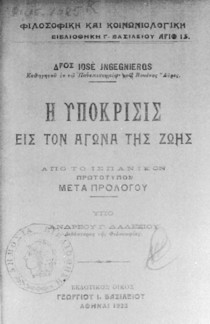
From 1904 on Ingenieros published
studies dealing with hysterical phenomena (Ingenieros, 1904b, 1906a) and their
relation to art as well, particularly music (Ingenieros, 1907). The work was
honored by the Medical Académie de
Paris. In this framework, he contended that "the auditive, visual,
phonative, and graphic images special of the music language are localized in
anatomical sub-centers included, respectively, within the centers of Wernicke,
Kussmaul, Broca and Exner, accounting for the localizations for every kind of
performance, such as violin and piano." This sharply factual presentation
was contested by a disciple of Jakob, José Tiburcio Borda (18691936), as being
rather a theoretical supposition, not yet enough grounded on empirical results.
(The divergence created some mutual reserve, which did not prevent to
collaborate again after the 1910 American Scientific International Congress.
Following the Congress Jakob himself was invited to contribute to the Archives). Ingenieros based his
criticized studies on the work of Charcot and Janet, and also made references
to the work of Breuer and Freud. Francophile Ingenieros initially received
Freud through French authors, specially the well-known critique that Pierre
Janet dedicated to Freud in 1913. His 1919 book Histeria y sugestion
sold repeatedly in several editions, at a time when many Argentinian
intellectuals were going back and forth to Europe, especially Paris, and
growing an increasing interest in unconscious and dream phenomena (Vezzetti,
1996; Puig 2004). Later on Ingenieros abandoned psychotherapy and wrote La
locura en la Argentina (Madness in Argentina), centering his interest on
dementias as a social phenomenon.
In 1908 Ingenieros founded the Sociedad
de Psicología (Society of Psychology); its first President was the eminent
researcher Horacio G. Piñero, who in 1900 had established the first
Psychological Laboratory in the University of Buenos Aires. Ingenieros was
elected President of the Argentina Medical Association in 1909 and President of
the Society of Psychology in 1910.
In 1915 Ingenieros founded the
journal Revista de Filosofía, which continued publication until 1929
(Ingenieros and Ponce, 2000). In 1915, Ingenieros also produced, in association
with Severo Vaccaro, a popular rather than academic collection, entitled La
cultura argentina. Between May and June 1916 he published the complete text
of La cultura filosófica en España (Philosophical Culture in Spain) in Revista
de Filosofía (Ingenieros, 1916d).
The Complete Works (Obras
Completas) of José Ingenieros were published in 20 volumes by Elmer Editor
in Buenos Aires in 1957 (Ingenieros, 1957a); the list of titles is reproduced
in Fig. 12. Another edition, in 8 volumes, gathered on the basis of the
compilation of Ingenieros, and of Aníbal
Ponce after Ingenieros death, was
published by Mar Océano in 1962, with
prefaces and the collaboration of Julio L. Peluffo, Héctor P. Agosti and
Gregorio Weinberg (Ingenieros, 1962).
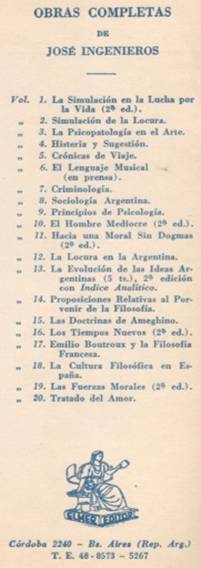
Fig.
12. Titles of books contained in the 20-volume 1957
edition of Obras Completas by Elmer Editor.
3.2. Political activity
As a medical student, on 7 December 1894 Ingenieros was
appointed secretary of the University
Socialist Center. It had been formed by renowned socialist Juan B. Justo (1865-1928), who later married another physician,
Ingenieros' friend and Jakob's student, socialist activist Alicia Moreau.
Ingenieros published the first piece of his noteworthy work ¿Que es el
Socialismo? (What is Socialism?) on 1 May 1895 in the periodical La
Vanguardia. He also directed the left weekly magazine La Montaña and by then wrote that money was dirty
and infectious. Nonetheless, in 1902 he was invited to resign affiliation
with the Socialist Party, after attending one of their gatherings in black tie
outfit. As Ángel Rodríguez Kauth is probably right in calling
this vital stage one of cognitive dissonance, one may be sure that such
outfit was not intended to upset his comrades. By then and until around 1910
Ingenieros distinguished himself by his refined attire, as shown in the winter
photographs: immense frock-coat, stovepipe hat, giant white collar, red
waistcoat, and sometimes a gold breastpin with the sportful legend, "Arbiter Elegantiarum".
In
1903 Ingenieros was designated, by the Municipality of the City of Buenos
Aires, as a Commissioner with the aim of studying the hygienic and social conditions
of the working and marginalized sectors. His diagnostic proposal was considered
a monument of socialist thought on the topic.
In 1919 Ingenieros accepted an
interview with President Hipólito Yrigoyen who was beginning a 14-year period in government, having won elections with his Radical Party, after a
Roque Sáenz Peña's initiative introduced
the secret ballot in 1916 in order to exchange opinions with him on the social
and political crisis that the country was experiencing. A written account of
the encounter has been given by Ingenieros daughter Delia (Kamia, 1957).
In 1920 Ingenieros adhered to the
progressive group Claridad (=Glasnost!) that Anatole France and other
intellectuals had founded in France. In his 1921 work Los Tiempos Nuevos
he defended the Bolshevik Revolution and was critical of the intervention
policy of the United States in Latin America. In 1922 he proposed the
foundation of Unión Latinoamericana (Latin American Union). In 1923 he
founded a monthly, Renovación, an anti-imperialist combative organ. He
used to sign under pseudonym Julio
Barreda Lynch (not to be confused with his young friend Ernesto Mario
Barreda, 1899-1958) or Raúl H. Cisneros.
In 1925 he co-authored, with socialist leader Alfredo L. Palacios, the founding
act of Unión Latinoamericana, and forswore his crude racist declarations of
yore, some affirming that Blacks seemed "closer to apes than to civilized
men, ... All that is done in favor of the inferior races is anti-scientific. At
most, one might protect them so that they die out agreeably." Unforeseen
death prevented him to accordingly revise his old stick-in-the-mud lines.

Fig. 13. Social critique: an Argentinian postcard
dated 1905 (previous page) satirizes the fact that by the time José Ingenieros,
a well-known public figure, had been unable to relinquish descriptive distance
when dealing with certain human groups. This "lack-of-empathy"
critique of late grew into insisting that he thereby helped to make persuasive the consensus about existing social exclusions. Such demeanor, at times, is contrasted with the acts of
another neurobiologist in the same Argentine tradition, Ramón Carrillo
(1906-1956), who as the comparison has it as a Minister of Health did not
reinforce a sector's polítical
hegemony by stigmatizing the disqualified social sectors
("medicalization"), portraying them in exclusion-legitimating
biological scenarios. In order to include and protect the whole population
Ramon Carrillo built some 400 hospitals or sanitary public institutions not
precisely contributing to the survival of the fittest and decentralized their
operation. Yet not always is stressed
that Ingenieros did not enjoy any similar power, and that he retracted his
former views on the mentioned human groups.
3.3. Studies in
Criminology
In 1896 Ingenieros wrote some
essays on Sociology and Cultural Anthropology. He had already begun to show
signs of his later professional and intellectual curiosities. The writings
unfolding in Criminología were united for the first time under Dos
páginas de Psiquiatría Criminal (Ingenieros, 1900). He inaugurated Archivos
de Criminología, Medicina Legal y Psiquiatría with his article Valor de la
psicopatología en la antropología criminal (Ingenieros, 1902), which was to
form the basis for developing his later and quite famous text Criminología
(1916c) that would be published in seven editions by 1919 (Ingenieros, 1957b;
1962).
Essays, written between 1899 and
1901, had by 1905 been reorganized and translated into English, French,
Portuguese and Italian, and published in various reviews. Most of these
appeared in Italian in a volume entitled Nuova classificazione
psicopatologica dei delinquenti (G. Ingegnieros, 1907); a Spanish
translation not mentioning a translators name appeared in Peru without
knowledge of the author (Ingenieros, 1908). After corrections and additions,
the work was re-edited for the Institute of Criminology of Buenos Aires and
published in 1910 by the Imprenta de la Penitenciaría Nacional (Press of the
National Penitentiary Institute), in which inmates were working as a part of
their rehabilitatory training. Including the part on Criminal Psychiatry, it
was reprinted two years later in Madrid under the title Criminología (Ingenieros,
1912). A sixth edition appeared in 1916 in Buenos Aires (Ingenieros, 1916c);
that text forms Volume 7 of the 1957 edition of Obras Completas (Ingenieros,
1957b) and was used for a Portuguese translation by Brazilian Professor Haeckel
de Lemos as well.
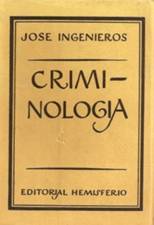
On 6 June 1907 Ingenieros founded
the Institute of Criminology of the National Penitentiary of Buenos Aires
(Instituto de Criminología de la Penitenciaría Nacional de Buenos Aires), a
clinic for the study of criminals and mental patients, of which he became first
director, an office he held until 1914
(del Olmo, 1999; Sánchez Sosa and Valderrama-Iturbe, 2001). As director
of the Servicio de Observación de Alienados at first, and heading the Instituto
de Criminología subsequently, he kept collecting and revising his material
over ten years, also taking into account contemporary European criminological
doctrines. In the spirit of the Positive School he pointed to the influences
of the modern philosophy of law, taking into account the biological and
sociological bases that form the foundations of Criminal Jurisprudence, and
transforming Criminal Anthropology into a Criminal Psychopathology by defining
the social value of criminal behavior and by providing a new classification of
criminals based on clinical observations.
Criminology covers topics such as the new philosophy of law and
criminal law, the crisis of contemporary penal legislation, postulates and
program of criminology, causes of criminality, the value of psychopathology in
criminal anthropology, the psychopathology and social unadjustment of
criminals, clinical and psychological fundamentals and psychopathological
classification of criminals, the theoretical postulates of juridical
positivism, the new bases of social defense, criminal psychiatry and the
dangers of defective penal legislation. Of special interest is the proposition
that ethical norms are constituted as a result of social experience
In
higher animal species, the fact manifests in a hundred ways that can be read in
the treatises of anecdotal Zoology or a Zoological Psychology. In humans
we observe it in every instance (Ingenieros, 1957b; Díaz Araujo, 1998).
To understand Ingenieros position
and impact, one has to consider the sociopolitical situation in Argentina at
the time of his most prolific criminological activity. One of his main concerns
was immigrants (Peset, 1983); moreover, his theoretical conclusions were drawn
from the study of prisoners, most of whom were immigrants, in this case white
anarchists. As mentioned, like other members of the Enlightened Minorities of
the 1880s generation, also Ingenieros expressed certain prejudices in some of
his works. Yet he attempted to explain criminality in psychopathological terms.
Such a
wave of massive migration was taking place in Argentina that, by 1890, the
country was receiving more
foreigners than any other Latin American nation. It is estimated (Rock, 1977)
that between 1857-1916, over 4,750,000 immigrants entered a country that would
in the years to come be marked by an unstable society, oligarchy, conflicting
relations between ruling class and immigrants, the resonance from the world
financial crisis of 1890, workers overexploitation, abominable urban living
conditions and increased crime among the immigrants' concentration around the
port of Buenos Aires, demonstrations, strikes, and a workers movement reaching
the highest level in all of Latin America between 1890-1918, (Rock, 1977;
Godio, 1979; del Olmo, 1999).
These events during the last years
of the 19th century and the first decade of the 20th century are the context
for Argentinas criminological boom. On the other hand, the development of the
Italian Positivist School was considered fundamental in correcting problems
such as crime and became most significant in Argentina following the 1885 Rome
Congress on Criminal Anthropology (del Olmo, 1999).
Its highest expression was the
creation in 1907 of the Institute of Criminology at the National Penitentiary
of Buenos Aires. It was considered the first in the world to scientifically study
prisoners with the aim of arriving at an adequate treatment regimen for their
readaptation. Lombrosos teachings were closely followed (Blarduni, 1976).
Francisco de Veyga and José
Ingenieros were given the responsibility of developing and applying the Italian
Positivist School to Argentinas criminal policy. Their official positions
enabled them to integrate theory and practice. Francisco de Veyga, a forensic
doctor, created, in 1897, the first course of Criminal Anthropology and
Criminal Sociology in the Faculty of Medicine of the University of Buenos
Aires. While he was director of the Police Service, he nominated his pupil
Ingenieros as clinical chief of the Police Service.
De Veyga is recognized for
pioneering clinical criminology in Argentina, but José Ingenieros consolidated
the direct study of criminals. In 1890, de Veyga started the Forensic
Psychiatry Clinic at the same prison, appointing his pupil as director. In
1902, he changed its name to the Psychiatric and Criminological Clinic, where Ingenieros
created, the following year, an Experimental Psychology Laboratory as the first
attempt to apply psychology to the study of criminals in Argentina. In 1907,
Ingenieros became director of the new Institute of Criminology of the National
Penitentiary of Buenos Aires, where he remained until 1914, when he resigned.
He developed a questionnaire for observing and examining criminals, called the Psychological
and Medical Bulletin, which continued to be applied by those who followed
him. The National Penitentiary of Buenos Aires, and within it the Institute,
became so well known that it was visited by internationally prominent figures.
Aside from their official posts,
both doctors engaged in intense intellectual activity. In 1902, de Veyga
founded the Archives of Psychiatry and Criminology, appointing
Ingenieros as director. The statement of mission in the inaugural issue of 1902
mentioned that the journal had as its aim to spread the scientific study of
abnormal men especially criminals and the insane as well as the conditions
of the psychological environment that affect them. It was soon the best-known
Argentinian journal internationally, with frequent contributions from
specialists from various countries. When the Institute of Criminology was created
in 1907, the Archives became its official journal.
Criminología is considered to be the first book on clinical
criminology published in the world (Pinatel and Bouzat, 1974). In it,
Ingenieros developed the Scientific Program applied to the study of criminals
at the Institute. He divided criminology into three areas: (a) criminal
etiology, i.e. the causes of crime; (b)
clinical criminology, the study of the multiplicity of criminal acts to
establish the degree of danger; and (c) criminal therapy, determining
the social and individual measures needed to assure societys defense by the
correction of the criminal.
Although Ingenieros Criminology
is based on the fundamental premises of the Italian Positivist School, he aired
his disagreements with Lombroso and Ferri in a paper entitled The
classification of criminals, which he presented in 1905 at the Fifth
International Psychology Congress in Rome (Fig. 7). For him, criminal
morphology was similar to that of all degenerates; the difference between
criminals and the rest, he believed, could be discovered in the field of
psychopathology. In this regard, Ingenieros wrote the following: The
development of a new orientation in the study of criminals to complement the
Italian Positivist School, according to scientific criteria gathered in the
clinic and the laboratory, is imminent. The study of anthropological
abnormalities is destined to give way to psychological abnormalities
(Ingenieros, 1957b). Thus, Ingenieros stressed the relationship between crime
and insanity. To him, crime was the product of abnormal psychic functioning,
which explains why he has been considered the founder of the psychopathological
school of Criminology.
3.4. El hombre mediocre
Ingenieros was probably the most
important positivist in the Argentinian tradition. Yet so eclectic he was, that
his ideas frequently exceed the positivist discourse. As Lorena Betta (2005)
has it, "his thought receives contributions from a most diverse
variegation of cultural and philosophical movements. Influences come from
positivist and evolutionist roots, include the modernist, romantic, and
spiritualist lineages, and continue until reformist marxism and the
revolutionary wing. In this combination play a part thinkers such as Darwin,
Spencer, Sarmiento, Lenin, Trotsky, Lunacharsky, Ruben Darío, José Martí, Rodó,
Vasconcelos, Emerson, Barbusse and Nietzsche." He rejected traditional
religious formulations of problems as falsely posited. The true metaphysical
questions arise out of, yet beyond, the sciences. But because they concern
matters of which we have no present experience, they are more adequate to
generate hypotheses rather than dogma. Ingenieros was gripped by evolution and
saw the possibility of human perfectibility. It brought special problems to his
views. Emerenciano Ramírez Villasanti (2001) points that in
order to formulate his convictions in a framework of evolutionary materialism,
Ingenieros developed deterministic interpretations of human and natural
affairs. This poses special conundrums in matters of ontology and ethics, as
determinism results incompatible with any aspiration of intentional
perfectioning. This makes Ingenieros the moralist to collide with Ingenieros
the scientist, an inflection point that was specially addressed by his follower
Gregorio Bermann (1894-1972) in his 1918 thesis probing determinism and free
will. Ingenieros yet went ahead by pointing that ideals themselves are
hypotheses for the improvement of human nature.
In El hombre mediocre (Ingenieros,
1913b, 1913c, 2001), a work that rivaled José Enrique Rodó's Ariel in its impact upon Latin American
youth, Ingenieros saw ideal values as being the production of a creative élite,
which is typically thwarted in its moral ambitions by mediocre human beings
(Smart, 1999).
Mediocres
are massified
persons unable of forming or striving for an ideal, who thus panic about
originality, rejecting creation and bustle to espouse apathy and stability. For
reformists, then, professors were "mediocre men". Their social
function was providing stillness rather than progress. In contrast,
"superior" people distinguish the needs of the time and use their
talents to fulfill them. For them, ideals are motivating factors for individual
and social progress. Anyone so doing is "young" by definition, and
definitionally young men are the ultimate formulators of ideals and those who
will bring about a better future. Yet narrowing this broad notion of youngness,
Ingenieros argued that human perfectibility is a privilege of the biological
youth: only physically young men strive for perfection and take action toward
it. Reformists of course identified themselves as Ingenieros's "superior
men" and wished that the university was the place in which male students
would be educated in the traits of "the new man" not by the old
professors, certainly.
Biased readings notwithstanding,
the pages of El hombre mediocre his work par excellence and a most
important work in Social Psychology, taught even today at many Universities
worldwide as a masterpiece of morality, social philosophy and literature
constitute the severest and most eloquent critique against all those who, in
the name of vulgarity and mediocrity, are against the progress of the
individual in ones eternal fight to procure an ideal. Through an accuracy of
opinions and communicative accent of sincerity with neither ties nor
prejudices, the book deserves without a doubt to be considered of exceptional
value, offering in its pages an inappreciable treasure of a live and lasting
education.
3.5. Philosophical naturalism and evolutionary
positivism
Positivism was a philosophical
stance comprising scientific, deterministic, psychological, evolutionary,
biological and sociological topics. Positivists admired Darwin and prized Comte
and Spencer as their philosophical heroes. Preference for one or the other gave
rise to evolutionary or social positivist tendencies, respectively. Positivists
rejected a priori and intuitive methodologies and praised science as
providing the most reliable knowledge about humans and the universe, and tried
to produce syntheses of scientific findings in which they elucidated the nature
of physical, biological, psychological and social phenomena (Rabossi, 2003).
The number of Latin American
positivist thinkers is large, and their extraction and importance diverse; it
is generally agreed that Ingenieros, along with Venezuelan-Chilean Andrés Bello
(1781-1865) and Cuban Enrique José Varona (1849-1933) were among the most
original and influential. Originality in this case means variation around
positivist nuclear tenets. For example Ingenieros' contribution, as dissected
by Oscar Terán (1986, 2000), shows its originality in its superposition of
ideological periods, passing from anarchizing socialism to latinoamericanist
anti-imperialism (e.g., Ingenieros 1922b) through Spencerian positivism and the
mounting moralist tendencies crystallized in El hombre mediocre. Other important positivists in Latin America,
all revolving around the positivist notional hard core with their own style of
variation, were Gabino Barreda (1820-1881) and Luis Villoro (b. 1922) of México
and Carlos Vaz Verreira (1871-1958) of Uruguay (Gracia and Millán, 1995).
The list of original pieces produced
during the positivist period by Latin American philosophers includes
Ingenieross Psicología Genética (1911a) and later Psicología
Biológica (1913a). Through it, Ingenieros helped to introduce Auguste
Comtes positivism into Argentina; he called it Genetic Psychology (Corsini,
2002). Evolutionary positivism gained particular popularity among several
scientists at the University of Buenos Aires, including Ramos-Mejía,
palaeontologist Florentino Ameghino (1853-1911), sociologist Carlos Octavio Bunge
(1875-1918, Mario Bunge's uncle) who called for biology-like social evolution
to curb revolution, and Ingenieros, who, although they did not formally found a
school (Martí, 1998), did have considerable influence.
In Genetic Psychology,
Ingenieros begins as a committed evolutionist, but admits the need for
improvement, feeling that inductivism neglects the speculative aspect of
science. As a solution, in his book Proposiciones relativas al porvenir de
la Filosofía (Propositions about the Future of Philosophy) a
program to define philosophy along scientific positivist lines he proposes an
experiental metaphysics that could generate future scientific hypotheses
(Ingenieros, 1918; 1960).
Proposiciones is one of his most original works; in it, Ingenieros exposes
a version of positivism that made metaphysics possible. He maintains that it is
possible to recognize, in all form of experience, an experiential remainder (residuo
experiencial) that is not unknowable, although it does not have a
transcendental character.
Ingenieros also found evolutionary
ethics unable to account for human ideals and in his Hacia una moral sin
dogmas an attempt to ground ethics on idealism and evolutionary
theory he pursues an idealism that can only be justified in evolutionary
terms (Ingenieros, 1917; 1961). But An ideal is a gesture of the spirit to
perfection. Thus, rather than the familiar methods of material stimulation to
boost up the development of productive forces, in Las fuerzas morales he regarded moral incentives as the motive
force of social progress.
4. Principios de Psicología Biológica
4.1. Publication history
According to the introductory note
of the definitive sixth edition (Ingenieros, 1946), the work initially appeared
in 1910 in separate chapters in the publication Argentina Médica. The
chapter Biological Psychology appeared in Archivos in 1910
(Ingenieros, 1910b), when Ingenieros was 33 years old (Fig. 13). In 1911, all
of the chapters were published under the title Psicología Genética (Ingenieros, 1911a) and the subtitle Historia natural de las funciones
psíquicas in a special volume of Archivos de Psiquiatría y Criminología (No. 10, January-April 1911).
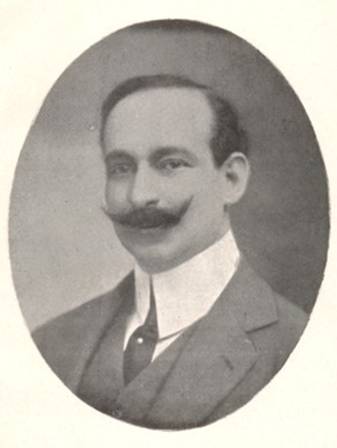
Fig. 13. Ingenieros at age 33 in 1910, the year the first
article on Biological Psychology appeared in Archivos (from Editorial,
1925a). He then attended the American Scientific International Congress as
President of both the Argentina Medical Association and the Society of
Psychology of Buenos Aires.
The first publication of Ingenieross Psychology in
independent book form happened in 1913 (Fig. 14, left) under the title Principios
de Psicología Biologica, as part of the series Biblioteca
Científico-Filosófica published by Daniel Jorro, Editor, Calle de la Paz,
23, Madrid (Ingenieros, 1913a) and printed by Luis Faure, Alonso Cano, 15,
Madrid.
A French translation of the
Spanish edition, prepared by R. Delpeuch, was published in 1914 in Paris (Fig.
14, center) by Librairie Félix Alcan, Boulevard Saint-Germain, 108, as
part of their series Bibliothèque de Philosophie Contemporaine (Ingenieros,
1914a), printed by Imprimerie Paul Brodard, Coulommiers. Th. Ribot soon wrote
an analysis of that work in La Revue Philosophique (Paris) (No. 7,
1914), which in a Spanish translation was published in La Semana Médica in
November 1914 in Buenos Aires (Ingenieros, 1916a).

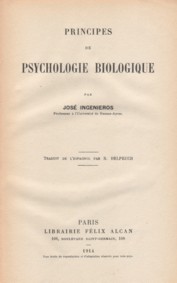
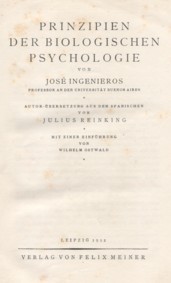
Fig. 14. Frontispiece of the three European editions of
the Principles of Biological Psychology: the 1913 Spanish edition (left),
the 1914 French edition (center), and the 1922 German edition (right).
An authorized German translation
(Fig. 14, right) of the first Spanish edition, prepared by Julius
Reinking, with an Introduction by Nobel Laureate and notable figure of German
science and letters Professor Wilhelm Ostwald of Leipzig, was published in 1922
by Verlag von Felix Meiner, Leipzig (Ingenieros, 1922a), printed by Druck der
Spamerschen Buchdruckerei. Ostwald, a chemist and philosopher, had been awarded
the Nobel Prize for Chemistry in 1909.
Between 1913 and 1916, five
successive editions of the work were published in Buenos Aires. The revised
fifth edition (corregido por el autor,
con un apéndice, y aligerado, al mismo tiempo, de notas que son innecesarias
para lectores ya versados en las disciplinas filosóficas modernas i.e., corrected by the author, plus an
appendix; and unburdened from notes uncalled for readers already knowledgeable
in modern philosophical disciplines), appeared in 1916 under the shortened
title Principios de Psicología (Ingenieros, 1916a) from Talleres Gráficos de L. J.
Rosso y Cía, Belgrano 475, Buenos Aires (Fig. 15, left). It carried the
following subtitles that specified its fundamental criteria: I Fundamentos
biológicos de esta ciencia natural. II Su posición en la filosofía
científica. III La formación natural de las funciones psíquicas. IV El método genético (I Biological fundamentals of this natural science.
II Its position in scientific philosophy. III The natural formation of psychic functions.
IV The genetic method).
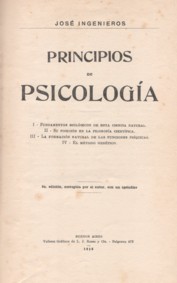
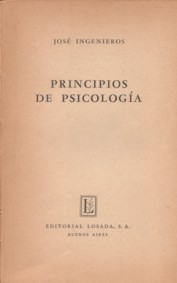
Fig. 15. Frontispiece of the last two Buenos Aires
editions under the shortened title Principios de Psicología: (left) the
fifth edition of 1916; (right) a later (1946) printing of the sixth and
definitive edition of 1919.
The sixth and definitive edition (nuevamente revisada por el autor, y
su texto puede considerarse definitivo) was published in 1919 in Buenos Aires
by L. J. Rosso. A modern printing by Editorial Losada, S.A., Buenos Aires
followed (Ingenieros, 1946), printed on 20 December 1946 at Artes Gráficas
Bartolomé U. Chiesino, Ameghino 838, Avellaneda, Buenos Aires (Fig. 15, right).
The definitive edition of Principios
de Psicología forms volume 9 of the Complete Works (Obras Completas)
of José Ingenieros, published in 24 volumes between 1930 and 1940 by Ediciones L. J. Rosso, Buenos Aires (Ingenieros,
1937); volume 9 of Obras Completas published
in 20 volumes in 1957 by Elmer Editor, Córdoba 2240, Buenos Aires, and printed
by Talleres Gráficos de la Técnica Impresora S.A.C.I., Córdoba 2240, Buenos
Aires (Ingenieros, 1957a); and included in volume III of the 8-volume set of Obras
Completas published in 1962
by Ediciones Mar Océano, Buenos Aires (Ingenieros, 1962).
To our knowledge, the work was
never translated into English. Perhaps 21st century science will value the Principios in a manner disconnected from the
political disposition of its author. One may speculate on the reasons for the neglect, be as they may mixed
religious, political and social. Even as an insider, Ingenieros remained an
outsider. He was loved by liberal intellectuals and students, but hated by the
establishment, even when he became part of it, as University of Buenos Aires
Professor, Police Laboratory Director, and so forth.
4.2. Prefatory remarks by Ingenieros
Ingenieros (1913a) begins his
3-page Preface with the definition that Biological Psychology studies the
natural formation of psychic functions in the evolution of living species,
in the evolution of human societies, and in the evolution of individuals; and
continues: Its more general results allow the establishment of a System of
Genetic Psychology, comprised of Comparative (Phylogenetic), Social
(Sociogenetic), and Individual (Ontogenetic) Psychology.
Continuing in the Preface, he
iterates: We conceive Psychology as a Natural Science that conforms to the
more general hypotheses of Scientific Philosophy; we treat its problems with
the help of the criteria of deterministic evolutionism. The genetic method in
Psychology applied in different fashions by Spencer, Romanes, Ardigó, Ribot,
Baldwin, Sergi and several others that we cite furnish the elements which,
placed in harmony with the data of auxiliary sciences, allow already to
establish its more general laws and to coordinate them in one system
In
considering Psychology as a Biological Science, we do not restrict the domain;
the genetic method, applied to the study of the Philosophical and Social
Disciplines, permits the reconstruction of the formation of Logic, of Morality,
of Aesthetics, of Sociology, of Law, etc. and to study them as Natural Sciences
reposed on Psychology.
And he concludes the Preface in
the following words: In formulating the essential principles of our academic
teachings, we propose to contribute to the establishment of Biological
Psychology as a Natural Science and conforming to the genetic method, and to
make it enter into the general system of Scientific Philosophy, which
continually elaborates and rectifies its hypotheses following the natural
rhythm of experience.
4.3. Structure and subject matter
All editions contain the original
Preface that is dated 1910. The first edition (Ingenieros, 1913a, 1914a, 1922a)
contains the Preface and ten Chapters, denoted by Latin numbers I through X.
The fifth edition (Ingenieros,
1916a) contains an Advertencia de la 5a Edición dated 1916, the
original Preface from 1910, the ten Chapters of the previous editions, and an
Appendix that consists of a 34-page essay titled Los fundamentos de la
psicología biológica, previously published in the May 1915 issue of Revista
de Filosofía.
The sixth edition (Ingenieros,
1946) contains an Advertencia de la 6a
Edición dated 1919, and the original 1910 Preface, while the ten chapters are
now re-structured in an Introduction plus
nine Chapters denoted by Latin numbers I through IX.
All editions conclude with a
10-page section titled Conclusiones sintéticas (Synthetic conclusions),
which is a compilation of all of the Conclusions sections that mark each
Chapters ending.
The titles of the ten Chapters of
the first five Spanish editions, published between 1913 and 1916 (as well as
those of the 1914 French translation and the 1922 German translation) are the following:
I: Scientific Philosophy. II: The natural formation of living matter. III:
Biological energetics and psychic functions. IV: Psychic functions in the
evolution of species. V: Psychic functions in the evolution of societies. VI:
Psychic functions in the evolution of individuals. VII: The natural formation
of conscious personality. VIII: The natural formation of the function of
thought. IX: Psychological methods. X: Biological Psychology.
The contents of the definitive
sixth Spanish edition (published in 1919 and reprinted in 1937, 1946, 1957 and
1962) are structured as follows: Introduction: Science and Philosophy. I: The
natural formation of living matter. II: The natural formation of psychic
functions. III: Psychic functions in the evolution of species. IV: Psychic
functions in the evolution of societies. V: Psychic functions in the evolution
of individuals. VI: The natural formation of conscious personality. VII:
Intellectualism and Rationalism. VIII: The genetic method. IX: Concept and
definition of Psychology.
One notes the following
modifications in the sixth definitive edition (Ingenieros 1946): Chapter I of
the previous editions now becomes Introduction: Science and Philosophy;
Chapters II-VII are re-numbered as Chapters I-VI, retaining their exact titles,
with the exception of Chapter III, which instead is named Chapter II: The
natural formation of psychic functions; Chapters VIII-X are renamed and become,
accordingly, Chapters VII: Intellectualism and Rationalism, VIII: The genetic
method; IX: Concept and definition of Psychology.
4.4. Summary of the text of Principios de Psicología
Biológica
We
have provided a complete English translation to our knowledge, the first ever
presented of Conclusiones Sintéticas (Triarhou and del Cerro, 2006),
based on the first Spanish edition of the work (Ingenieros, 1911a; Ingenieros,
1913a). It is reproduced below. Each one of the ten chapters is headed by its
original title in the book. The three diagrams that formed part of the original
publication are included as Figures 16, 17 and 18; a selection of authors to
whom Ingenieros makes reference are mentioned at the end of each chapter.
I. Scientific Philosophy. The knowledge of reality is a natural result of the
empirical experience, always relative and limited. Imagination allows to exceed
its data, through the formulation of hypotheses that depart from it and which
seek to be ratified by it. A science, at each moment of its formation,
expresses the laws of its actual experience and the hypotheses of its possible
experience. Experience, a fundamental of the sciences, was also the basis for
all philosophy. There is no science without hypothesis, there is no philosophy
without experience. Their natural formation is progressive. The particular pace
of the sciences and of philosophies may at times disagree because of the
disparity of methods used to treat their respective problems; but, in general,
the formation of both follows the pace of experience and is effected as a
function of the social environment.
Scientific philosophy is a system
of hypotheses founded on the most general laws demonstrated by particular
sciences to explain the problems that exceed the current or the possible
experience. It is a system in continuous formation. It has methods, but has no
dogmas. It corrects itself with the pace of varying experience. Elaborated by
people evolving in an environs that evolves, it represents an unstable
equilibrium between growing experience and rectified hypotheses. The most
general results of the sciences converge to demonstrate three fundamental
hypotheses: the unity of the real, its incessant evolution, and the determinism
of its manifestations. These must apply to resolve the metaphysical problems:
the origin of matter, of life and of thought.

Fig. 16. Synoptic classification of philosophical
systems, dated 1910. From Principios (Ingenieros, 1913a).
All science is characterized by
the impersonality of its methods, which are the natural results of experience;
all philosophy is characterized by the systematic unity of its hypotheses.
Intuitionism finds that metaphysical problems are inaccessible to the means of
scientific methods; criticism finds that reality is heteromorphous and escapes
all unitary or systematic explanation. Scientific philosophy tends, on the
other hand, to be a system of hypotheses founded on experience and proposes to
explain the unknown on the basis of the known: it is a metaphysics of
experience.
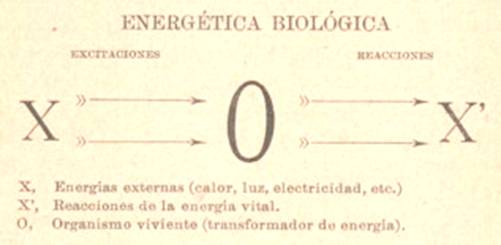
Fig. 17. Diagram of biological energetics according to
Ingenieros (1913a).
Among the writers and scientists
Ingenieros cites are Ardigó, Ribot, W. James, H. Spencer, Bacon, Spinoza, Kant,
Newton, Fichte, Lamarck, H. F. Osborn, Metchnikoff, W. Ostwald, as well as
Plato, Aristotle and Eucleid.
II. The natural formation of
living matter. The natural formation
of living matter can be explained by means of a unitary hypothesis,
evolutionary and genetic.
On the basis of the most general
assumptions of modern energetics on the constitution of matter, its diverse
states or forms may be conceived as an uninterrupted series of energy
condensations, derived from each other through the transformation of their
atomic-molecular structure (morphogenesis) and characterized by the acquisition
of properties (physiogenesis) that allow to differentiate them. The states of
matter actually known are stakes of a series whose terms we largely ignore, and
which could be discovered with time.

Fig.
18. Components of behavior and their combinations and yields,
according to Ingenieros (1913a).
The states of matter, evolutionary
in a constant course, constitute the «species» of matter, whose structure and
properties «evolve» over periods of time that cannot be evaluated in relation
to the human life-span; that is why their transformations escape physical
chemistry, and science can occupy itself with the states that present to our
actual experience as if their structure and properties were invariable.
The genetic study of living beings
reveals that all «varieties» of protoplasms constitute a single
physico-chemical «species», in the structure of which dominates the colloidal
state, and among the functions of which assimilation is essential; either of
these is already apparent in certain states of non-living matter, tending at
the same time to bring it closer to living matter, in the course of the
«evolution of the species of matter». Its «variations» determine innumerable
«equilibrium forms» represented by biological species, varying at the same time
their «functions of adaptation».
The artificial formation of living
matter is improbable, because one ignores the «phylogeny» of the species of
matter. On the contrary, its natural formation can be considered as a permanent
result of the «variability» of the «species» of matter more immediate to it by
its structure and their functions, although it escapes our actual experience
because of its extension in time.
Authors mentioned by Ingenieros
include J. Moleschott, Claude Bernard, Pasteur, Virchow, Bergson, Ostwald, as
well as Heracleitus, Aristotle, Pythagoras, Epicurus, Galen and Paracelsus.
III. Biological energetics and
psychic functions.
Biological functions are the result of incessant energy permutations in
stationary systems. Energy disequilibria of the environment determine
disequilibria in the organisms. The capacity of re-establishing equilibrium
depends on assimilation, which accumulates energy and restores a release
necessary for adaptation. We define excitation as a modification of the
conditions of the physico-chemical equilibrium of an organism, by the action of
energies that are exerted on the environment where it lives. We define movement
as a release of energy accumulated in living beings in order to re-establish
the equilibrium modified by excitation. There exist as many elementary forms of
excitability and mobility as there are the species of energy that act on living
beings and modify their conditions of physico-chemical equilibrium.
Pluricellular organisms act as batteries of energy accumulation.
The conditions of energy
equilibrium between a chemical species and its environment determine its
morphological characters; the forms of living beings depend on the equilibrium
conditions characteristic of the chemical constitution of their protoplasm, in
relation to those of their environment. Variations in the chemical constitution
are correlated with morphological variations: living organisms possess the form
determined by their conditions of energy equilibrium.
In the course of biological
evolution, psychic functions are functions of adaptation to the environment.
Their natural formation is continuous, based on the elementary properties of
living matter: excitability and motility. The development of every function is
accompanied by variations in the organic structure: at each moment of
development, the form of the organs represents the degree of function, reaching
in the higher vertebrates a complex neurological architecture. The «fundamental
biopsychical law» establishes the strict correlation between the degree of
psychic functions and the structure of the organs which achieve them.
The property of conserving a
structural modification as a consequence of every preceding energy
disequilibrium, constitutes «memory», an essential condition for the natural
formation of «experience». Every excitation in connection with prior experience
is a «sensation». The functional variations and the structural modifications
produced in the course of the evolution of species constitute the «phylogenetic
experience»; in the course of the evolution of social groups, the «sociogenetic
experience»; in the evolution of individuals, the «ontogenetic experience».
Ingenieros mentions G. Bruno, G.
Sergi, Lugaro, Du Bois-Raymond, Jacques Loeb and his tropism theory, and
Ostwald. As well as mentioning Empedocles and Parmenides, he quotes Aritotles
statement that the soul is the entelechy of the body, formed on the opinion
he attributes to Philolaus, that psychical processes are an action of bodily
factors.
IV. Psychic functions in the
evolution of species.
Psychic functions develop in a progressive and continuous manner in the course
of the evolution of species, without varying their identity or their nature;
they are functions destined for the adaptation of living beings to their
environment. They present differences in degree, conditioned by the sum of
experiences acquired by each species, but not differences in nature: their
extreme terms are protoplasmic irritability and creative imagination.
The evolution of psychic functions
is concomitant with the evolution of the organs that exert them: biogenetic
law. The enormous differences in degree that we observe in diverse species
correspond to enormous differences in morphological evolution. Psychic
phylogeny and organic phylogeny are correlative.
The continuity of the natural
formation of psychic functions imposes the application of the genetic criterion
in its study. All the results of comparative psychology converge on
demonstrating the mental descent of humans in accordance with the laws of
transformism.
In this Chapter, the author cites
Anaxagoras, Socrates, Plato, Aristotle, Plutarch, the Stoïc and Cynic
philosophers, Ovid, Galen and Celsus; Descartes, Cuvier, Buffon, Erasmus
Darwin, Lamarck, Spencer, Darwin, Th. Huxley, Haeckel, H. Piéron, W. Wundt, G.
Romanes, Holmgren; neuroanatomists Ramón y Cajal, van Gehuchten, Golgi, von
Lenhossék and Christofredo Jakob, and paleontologist Florentino Ameghino.
V. Psychic functions in the
evolution of societies.
Sociology studies the evolution of our animal species in an environment
favorable to its existence and reproduction. Human societies are animal
colonies that possess the functions and the organization best adapted to the
conditions of the environement in which they live, varying in accordance with
it. Economic phenomena are a special case of biological phenomena; political
economy is the application to the human species of biological laws that govern
the struggle for life in all animal societies.
Collective psychic functions
manifest themselves as beliefs and practices (customs), accompanied by an
organization of social structure (institutions). The variations in collective
mental functions are correlative to the variations of social organization:
biogenetic law. The continuity of social experience is represented by social
heredity (tradition); its transformations depend on acquired variations
(innovation). «Progress» is the improvement of functional and structural
adaptation of a society to the conditions of the environment in which it lives.
Collective psychic functions
develop in a progressive manner and continue, from primitive peoples to
civilized societies; the general history of beliefs accompanies the general
history of institutions. Each particular society would reproduce that general
evolution, if the conditions of environment and race did not differ. In the
diverse social classes, coexisting in a society, the stages that those
traversed during the natural formation of social experience remain
superimposed.
In societies, psychic functions
bear the same «biophylactic» significance as in the individual. Morals and law,
which are the most typical expressions of variations in social experience in
customs and institutions, are presented as a function and an organization
destined to protect society.
In this Chapter, Ingenieros
mentions Spencer, Le Bon, J. Moleschott, Darwins Descent of Man,
Wundts Folk Psychology, as well as his own El Hombre Mediocre and
Criminología. The adjective «biophylactic»
and noun «biophylaxis», which Ingenieros adopted since around 1900 and are
rather distinctive of Jakob's tradition, mean «life-protecting» and denote one
of the values of the term «adaptive» in evolutionary context. (Curiously, it
has been also retained in the Far East particularly in Japan, Korea and
Viet-Nam yet with a non-evolutionary meaning, as a nonspecific defense
reaction of the body, e.g., phagocytosis, vascular and other reactions of
inflammatory processes. It therefore is especially used in Microbiology and
Immunology, and a State Department of Biophylaxis exists in Tokyo.)
VI. Psychic functions in the
evolution of individuals. The
natural formation of the personality is conditioned by the environment:
individual experience is formed as a function of social experience. Normal
personality, though variable, is one from birth to death; one may distinguish
in it three periods: organization, improvement, and involution. Individual
psychic functions do not have a sudden origin, they constitute a continuous development;
they do not appear, they are formed progressively; they do not enter the
organism preformed from the outside, they are produced by the development of
potential tendencies accumulated by heredity in the reproductive germs.
In the background of the already
constituted personality subsist the hereditary tendencies and indications which
constitute the «mentality of the species»; in its secondary formations is
reflected the «social mentality»; the variations acquired by the individual
constitute its «individual mentality».
Individual personality undergoes
an involution in inverse order to that of the formation of the experience;
first disappear its original variations, later its social acquisitions, and
finally congenital innate tendencies.
In individual developmental
unfolding, the evolution of psychic functions is concomitant with that of the
organs engaged in executing them: biogenetic law.
Mental inequality among
individuals is the first postulate of biological psychology. The
differentiation of individuals, following their diverse education, is the
second. The third postulate is the continuous variation of individual
mentality, which ceases with death.
Biological heredity constitutes
the temperament and translates into tendencies. Education constitutes the
individual experience, represented by acquired habits. Individual personality
is the result of variations of heredity by means of education: it constitutes
the character and manifests itself through behavior.
Ingenieros makes extensive
reference to the neuroanatomical studies on morphogenesis of His, Edinger,
Ramón y Cajal, Kölliker, Déjèrine, Bechterew, Nissl, Lugaro, Meynert, Vogt and
Marinesco; further, he cites philosophers Theophrastus and Sully, and refers to
his own Simulación en la Lucha por
la Vida.
VII. The natural formation of
conscious personality.
«Consciousness» is not an «entity» inextensible and immaterial, it is not a
«faculty» synthesizing the psychological phenomena, it is not an
«epiphenomenon» dominating the physiological phenomena, it is not a «directing
or creative force» of psychic activity. «Consciousness», as reality,
does not exist; one may only regard it as the abstraction of a quality,
common to certain biological phenomena in determined conditions.
Ancient philosophers and
contemporary psychologists readily confuse as «consciousness» two classes of
distinct functional processes: certain particular conscious phenomena or
«states of consciousness» (in which case «consciousness» is an extrinsic quality
of the phenomena and depends on their relations to prior experience) and conscious
personality or «ego consciousness» (in which case «consciousness» is a
continuous synthesis of individual experience).
The possibility and the degree of
conscious activity are conditioned by the sum of experience acquired by each
species in the course of phylogenetic evolution. The natural formation of
experience is determined by the systematization of variations in structure and
function, fixed in living beings by memory, organized in habits and transmitted
as instinctive tendencies.
The conscious character of certain
biological phenomena depends on their relations with the individual personality
(excitation is a sensation only in relation to prior experience and forms part
of the consecutive experience); it is a quality subordinate to particular
conditions of cerebral activity, produced in accordance with the more general
laws that govern all reality subject to our experience.
In phylogenetic and ontogenetic
evolution, conscious activity is useful for the new adaptive reactions of
living beings in the incessant variations of their environment, implying an
improvement of «biophylactic» function or protective of the organism.
«Conscious» personality is a
progressive acquisition in the course of individual experience. Continuity of
experience determines the functional unity of personality, which is incessantly
variable like experience itself.
In Chapter VII Ingenieros mentions
Plotinus, Paracelsus, H. Bergson and W. James.
VIII. The natural formation of the
function of thought. The
function of thought is not attributed to any special faculty, it is a natural
and synergistic result of experience. It develops progressively and must be studied
with the methods of genetic psychology: in the evolution of species, of races
and of individuals. The natural history of intellectual operations can only be
established by comparing those of humans with those of other animals, those of
the civilized with those of the primitive, those of the adult with those of
children.
Through this biological function
living beings know the variations of the unstable environment in which they
evolve: knowledge of reality is a natural formation in the course of experience.
Thought is not an entity which precedes it, it does not exist in itself; it is
a result of relations between its data. Experience being variable, thought is
in continuous formation.
The real modes of thought are
infinite; they are essentially indistinct, they represent progressive steps in
a continuous series, from the simple to the composite. In lower animal species,
in primitive races and in children, reasoning is simple: these forms persist in
civilized and adult humans, next to others more evolved. There exists an
uninterrupted continuity among sensations, general images, elementary
judgements and higher forms of reasoning. Their natural result is the formation
of beliefs, which are synthetic, systematizing and dynamogenous. Belief is the
natural form of thought: biological logic is a natural history of beliefs. We
humans believe prior to applying logical rules of perfect reasoning; all new
experience happens through already preformed beliefs and influences the
acquisition of consecutive experience.
Correct reasonings are
exceptional: common reasonings are extralogical. The real manners of thinking
consist of reasonings that classical logic disdained: to it, man would be an
illogical and irrational being. For biological logic, man is a natural being:
it studies its functions. The rationalistic systems, being not founded on
experience, are false, they do not correspond to reality.
The highest result of the function
of thought is the formation of ideals; imagination, based on experience,
elaborates beliefs toward future human improvement. An «ideal» is a hypothesis:
it is formed like it and it serves like it. In ancient dogmatic idealism that
spiritualists place on absolute, rigid and aprioristic «ideas», scientific
philosophy counters an experimental idealism that refers to the «ideals»
of perfection, incessantly renovated, plastic, evolving like life itself.
Citations include Plato,
Hippocrates, Democritus, Soury, Ostwald, and El Hombre Mediocre.
IX. Psychological methods. Psychology studies functions that are formed in
the course of biological evolution; it is a genetic science and one that must
adopt the genetic method.
The
observation of psychic functions can be effected under conditions similar to
those which allow us to observe other biological functions. All their
particular methods are observational: introspective and extrospective, direct
and experimental, sensory and instrumental. Their efficacy depends, initially,
on the personal aptitudes of the psychologist, which may vary in each case,
from mediocrity to genius.
Extrospective observation is the
single method which can be extended to all forms of evolution of psychic
functions. Introspective observation allows us to know a small part of the
psychic functions in individual evolution. Experimental observation,
standardized aforehand, can only be applied to a restricted number of
elementary psychic processes of individuals; in a minor scale, it can be used
to essay other animal species, and sometimes in social psychology.
Extrospective observation is
fundamental; introspection and experimentation are its valuable auxiliaries.
Ingenieros discusses and builds
upon the works of Descartes, Spinoza, Comte, Claparède, P. Cabanis, Gall,
Haeckel and W. James.
X. Biological Psychology. «Psychology is a natural science that studies the
psychic functions of living beings». Such study is not restricted to conscious
functions, which are one aspect of psychic activity, neither to human
functions, which are one aspect of its long phylogenetic formation.
The psychophysical parallelism is not a philosophical
doctrine, it is a provisional attitude which has allowed to reconcile
contradictory doctrines for the adoption of a particular method. «Wundtism» is
not necessary anymore, it even obstructs the formation of definitive general
doctrines. The insufficiency of experimentalism does not imply an insufficiency
of the scientific methods, of which it ony represents one aspect, and not the
most important, in the genetic method.
Neoidealism has reinstated the old spiritualism, by adopting
the fundamental data of biological psychology, without accepting its
hypotheses. «Βergsonism» affirms the excellence of the intuitive method in
opposition to the experimental method: it conceives philosophical intuition as
a faculty antecedent to experience and superior to the natural formation of
scientific hypotheses. In its application to psychology it is reduced in fact
to a rehabilitation, more or less literary, of introspection and the old
speculative methods.
Against the philosophical insufficiency of certain
experimentalists and the uncertain speculation of certain intuitionists,
biological psychology adopts the genetic method to study the natural formation
of psychic functions, based on the broadest experience to establish less
uncertain philosophical hypotheses. Its actual formula, against those
tendencies and methods, would be: «Neither Wundt, nor Bergson».
Psychology occupies a lower order than biology in scientific
philosophy; but, on the other hand, it embraces all the classical philosophical
and social disciplines. Its experience cannot constitute a total explanation of
the universe, but it serves as a basis for a general interpretation of the
function of thought in all thinking beings. The biological concept and the genetic
method offer to analysts a general orientation, which will make their efforts
more fruitful, and to synthetizers a base of experience increasingly ample and
secure; marching to distinct step in the same path, the former and the latter,
will concur in enunciating psychic functions to a unitary explanation of
nature.
In
the last chapter, Ingenieros makes reference to Spencer, William James, Haeckel
and Ostwald.
5. Wilhelm Ostwald
(1853-1932)
5.1. Life and
work
Chemist, physicist and natural
philosopher Wilhelm Ostwald (Fig. 19) was born on 2 September 1853 in Riga,
Latvia (then Russia). He studied chemistry at Dorpat University from 1872-1875,
an academic milieu also influential on Christfried Jakob through his teacher
and friend Adolf von Strümpell (Oddo and Szirko 2006). Ostwald's initial
appointment was as Assistant at the Physics Institute under Arthur von
Oettingen, and subsequently in the Chemistry Laboratory under Carl Schmidt; in
1877 he became Lecturer at Dorpat University, and in 1881 Professor of
Chemistry at Riga Polytechnicum. In 1887 he accepted a Professorship in
Physical Chemistry at Leipzig University. Ostwald remained in Leipzig until his
retirement in 1906, with a short interruption in 1904-1905 as first exchange
professor at Harvard. His pupils included Jacobus Henricus Van t Hoff (Nobel
Chemistry Prize 1901), Svante Arrhenius (Nobel Chemistry Prize 1903), Walther
Nernst (Nobel Chemistry Prize 1920), as well as Gustav Tammann and Johannes Wislicenus.
Ostwald began his experiments in 1875, investigating
the law of mass action of water in relation to problems of chemical affinity,
with special emphasis on electrochemistry and chemical dynamics. His pioneering
work in the field of electrochemistry led to the discovery of the law of
dilution that is named after him. Ostwald became one of the founders of
classical Physical Chemistry. He was awarded the Nobel Prize in Chemistry for
1909 in recognition of his work on
catalysis and for his investigations into the fundamental principles governing
chemical equilibria and rates of reaction.
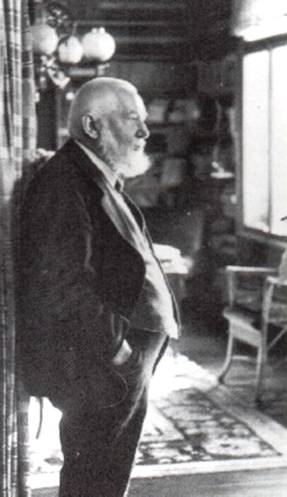
![]()
Fig. 19. Wilhelm Ostwald
(1853-1932). (From nobelsoftware.com/vedci/images; signature facsimile from
Zott, 2003).
A tireless writer, he published numerous textbooks in German,
including Lehrbuch der allgemeinen Chemie (Textbook of General
Chemistry, 1884), Grundriss der allgemeinen Chemie (Outline of General
Chemistry, 1889) and Hand und Hilfsbuch zur Ausführung physikalisch-chemischer
Messungen (Handbook and Manual for Physicochemical Measurements, 1893). It is interesting to relate that the Spanish
translator of Ostwalds Elements of Chemistry (Ostwald, 1917) was
Catalan chemist, physicist and naturalist Modesto Bargalló Ardevol (1894-1975).
He was one of the scientific and intellectual adventurers of the twentieth
century who later went on exile to México, becoming professor at the National
Polytechnic Institute and publishing important books on mining and metallurgy. He
had also compiled a booklet titled Los pensamientos de Cajal sobre la
educación (Cajals thoughts on education), published on 1 May 1924 in
Madrid, to honor the second anniversary of the glorious retirement of the
savant Spanish histologist (Bargalló, 1924).
In 1887 Ostwald founded Zeitschrift
für physikalische Chemie, editing 100 volumes by 1922. In 1889 he founded Klassiker
der exakten Wissenschaften, of which 250 volumes have been published. In
1894 he founded the Deutsche Elektrochemische Gesellschaft (German
Electrochemical Society) which in 1902 became Deutsche Bunsen-Gesellschaft
für angewandte physikalische Chemie (German Bunsen-Society for Applied
Physical Chemistry). In 1902
he founded Annalen der Naturphilosophie and had edited 14 volumes by
1921.
Ostwald showed a rounded interest
in the physical sciences. From his retirement in 1906 at age 53 on, he found a
new sphere for his scientific and organizational talents. Besides a physical,
analytical and technical chemist, Ostwald was a quick-witted philosopher,
ardent reformer and leader of international movements, enthusiastic popularizer
of science, poet and painter, trying to put into application the aesthetic
principles on which he worked during the last two decades of his life; he
elaborated his views towards an abundant and complex philosophy of nature that
incorporated sociology, psychology, ethics and aesthetics (Schummer, 2001).
Ostwald published his widely read
collection of biographies of natural scientists under the title Große Männer
(Great men) in 1909 in Leipzig (Ostwald, 1909). Ostwald investigated the psychological causes of
scientific productivity. He categorized scientists as romantic and
classical types. To the revolutionizing romantic, ideas come fast and thick
and must find quick expression; his main concern is to get a problem off his
hands in order to make room for the next. For the ground-up builder classical
type, the concern is to perfect his product by working it over so exhaustively
that no contemporary might be able to improve upon it. He wrote that great men exist so that others can become even
greater.
For Ostwald, sociology occupies
the highest place in the system of sciences; within sociology, the science of genius
or prominent, culture-creating humans, stands on top. Under these criteria the
book contains studies on the sociobiology of genius through examples of
scientists like Michael Faraday, Justus
Liebig, Hermann Helmholtz and Johannes Müller.
Ostwalds philosophy was an
all-embracing scientific world-view, based on three principles: an
experimentalist epistemology, a metaphysical priority of energy over matter,
and a strong belief in societal progress by means of science, technology, and
social organization. He continued his studies and publications on philosophy
with Der energetische Imperativ (The Energetic Imperative), Die
Pyramide der Wissenschaften (The Pyramid of the Sciences) and Moderne
Naturphilosophie (Modern Natural Philosophy) (Ostwald, 1914).
For Ostwald progress meant working
against the consequences of the second law of thermodynamics, and his general
motto became: Do not waste energy, ennoble it. Further, he considered both
war and religion unscientific wastes of energy, to the extent that he became
a leading figure in both the world pacifist movement of the middle-class and
the Monist League, a science-based atheistic group also active in public life
and educational reform. He believed that he could fight the Churchs claim to
power and spread a natural scientific ideology. He pursued those aims in Monistische
Sonntagspredigten (Monistic Sunday Sermons) and Arbeiten zum Monismus
(Works on Monism) (Nobel Foundation, 1966; Schummer, 2001).
His final passion was the theory
of colors. He devoted himself to the laws of color in the hope of developing a
scientific basis for their perceived harmonies. His seventeen Letters
to a painter on the theory and practice of painting appeared during the winter of 1903 and spring of 1904
in the scientific supplement of Münchener allgemeine Zeitung. An English
edition, containing many additions to the German original of 1904, carefully
revised and corrected, was published three years later (Ostwald, 1907). Other works in this field are Die Farbenfibel (The Color
Primer, 1916), which introduced a color system devoted to the task of
developing a scientific standardization and surviving for 15 editions, Die
Farbenlehre (Color Theory), and Die Harmonie der Farben (The harmony
of colors). He also published the periodical Die Farbe (Color).
Expressed in technical language,
Ostwald attempted to construct a perceptual color system using non-empirical
methods. In the world of art, Ostwald may indeed have created rather a doubtful
reputation for himself with this claim. But his system nevertheless left its
mark. Among the topics he covered, one
finds The physico-chemical side of the technique of painting, Paper and
fixatives, Why lead-pencil drawings are glossy and charcoal drawings are
not, The drying of oil colors and the catalytic processes involved,
Objective representation of subjective phenomena, Opinions about Academies;
Mistakes in seeing and mistakes in painting, Conscious creation.
Ostwald died on 3 April 1932 in
his country home near Leipzig.
5.2. Ostwalds
introduction to the German edition of Biological
Psychology
The following is an English
rendering of Zur Einführung (as an Introduction) that Wilhelm
Ostwald wrote for Prinzipien der biologischen Psychologie, the German edition of Principios
(Ingenieros, 1922a). For more details on Ostwalds proposed system for the
classification of the sciences the reader is referred to Ostwald (1914),
Hapke (2003), and Zott (2003).
According to its adopted methods Psychology
is a science, which is predicated on the assumption of the Exact (Ordnungswissenschaften)
and Energetic Sciences (energetischen Wissenschaften), as well as
General Biology, which includes Psychology. Therefore, its precise scientific formation
cannot occur unless the more general disciplines which are the presupposed
auxiliary sciences have attained the necessary level of systematic
development, such that the latter may be applied for the appropriate
development of the more advanced and specific science. However, what depends on
such a systematic association is not at all the developmental course of
individual sciences, but only the extent achieved in each case. The initial
emergence of a science does not depend on its position in the system, but
rather, on the needs of everyday life. And thus, we see that a whole lot of
sciences have tried to take shape, while the exact means were still totally
insufficient. The methodically undeveloped although partially very old
disciplines, grouped under the Humanities (Geisteswissenschaften),
prove, upon closer examination, to be at an embryonal stage. They have also
emerged from the need to gain insight into the difficult and manifold problems
of human coexistence and its mental and cultural application; but they have not
been able to attain their true definitive form as yet, because such methodical
conditions have been lacking.
To the extent, however, that
sufficient material is brought together in relationship to the more general
sciences, it by no means entails automatically an unimpaired and appropriate
use of such material also for the formation of the advanced sciences. What is
more, those who were the first to introduce this necessary procedure, must
overcome big and powerful obstacles, practised by those who have been working
in the field until now in a more primitive manner and have domineered it. The
latter consider the intrusion of the new means of thought and work with which
they are not familiarized , instinctively and most likely in good faith, a
destruction of science as they know it, and accordingly renounce them.
There are two ways to go about
such difficulties. One either begins a fundamental fight with the
representatives of the older view over methodological problems and tries to
prove the superiority of the new scientific approach over the old through
logical and other arguments. Usually, such a procedure is followed first,
leading however to a result only in the rarest of cases. And even if it finally
succeeds in doing so, it proves an extremely time- and energy-consuming detour.
A much more direct and shorter way
is to completely ignore the methodological reservations of the supporters of
those older scientific forms and to effect the rational or exact reconstruction
of the science to be through the means at hand, as far as they reach. The
presence of such a rational basis makes it then possible for those who get
involved in research with the wish and the goal of a direct and successful
outcome, to not only find and implement such work, but at the same time to put
it in the appropriate perspective within the total picture as well. Thus arises
the strong, instructive character of such fundamental tasks, which we so
frequently witness in studying the history of the simpler and more general
sciences.
The book at hand is also to be
regarded as a work of that latter kind. Meeting the methodical need, which it
takes upon itself to satisfy, it primarily and most thoroughly treats the
biological background of rational Psychology and then gradually implements
these views in Psychology all the way to the development of the individual
personality. That through this methodical reconstruction a profound contrast
manifests itself to most attempts heretofore of a foundation of Psychology, was
to be expected on methodological grounds and applies most obviously to the work
at hand as well. Regardless of the personal stance one may assume towards the
contents and results of this work, one may not deny the author the concession
of being exclusively concerned with the topic, and sparing with utmost care any
personal appeal in assessing the thoughts he criticizes.
Finally, it shall
be noticed, the author through his course of studies and mother-tongue is
primarily familiar with the literature published on the subject in the Romanic
languages, and therefore French in particular. Hence results a certain
one-sidedness in the selection of the material used, which however has not been
harmful in the roundup of the train of thoughts. Perhaps though, this situation
offers a pretext for a similarly disposed German researcher to compile an
analogous work with corresponding consideration of the German and English
literatures. It will then in some details culminate differently from the one at
hand. In its essential part and that is certainly the inestimable result of a
really methodically reconstructed science its main content would not be
substantially different from that of the present work. Regarding the transition
of the entire scientific Psychology from the still oft prescribing metaphysical
phase in which it finds itself presently into the positive and rational,
the book of the South American researcher, having in the meantime appeared in
the French language as well, will provide fundamental services.
Great Bothen,
June 1922,
Wilhelm Ostwald.
5.3. Appendix:
Wilhelm Ostwalds original German text: Zur Einführung.
Gemäß ihrer methodischen Stellung
ist die Psychologie eine Wissenschaft, welche zur Voraussetzung die Ordnungswissenschaften
und energetischen Wissenschaften sowie die allgemeine Biologie mit Einschluß
der Psychologie hat. Ihre exaktwissenschaftliche Gestaltung kann somit nicht
eher stattfinden, als nachdem die als Hilfswissenschaften vorauszusetzenden allgemeineren
Disziplinen den erforderlichen Grad systematischer Entwicklung erlangt haben,
um für den Ausbau der höheren und spezielleren Wissenschaft sachgemäß verwertet
werden zu können. Nun hängt aber die Zeit der Entwicklung der einzelnen
Wissenschaften durchaus nicht von diesem systematischen Zusammenhange ab,
sondern nur der jeweils erreichte Grad ihrer Vollkommenheit. Die ursprüngliche
Entstehung der Wissenschaften beruht ja nicht auf ihrer Stellung im System,
sondern auf den Notwendigkeiten des täglichen Lebens. Und so sehen wir, daß
eine ganze Anzahl von Wissenschaften sich zu gestalten versucht haben, obwohl
die exakten Hilfsmittel dazu noch gänzlich unzulänglich waren. Die Gruppe von
methodisch unentwickelten, obwohl zum Teil sehr alten Disziplinen, welche man
die Geisteswissenschaften nennt, erweisen sich, genauer untersucht, als
derartige Wissenschaften im embryonalen Zustande. Sie sind aus dem Bedürfnis
entstanden, auch über die schwierigen und mannigfaltigen Probleme des
Zusammenlebens der Menschheit und ihrer geistigen und kulturellen Betätigung
Auskunft zu gewinnen; sie haben aber ihre exakte Dauerform noch nicht annehmen
können, weil jene methodischen Voraussetzungen fehlten.
In dem Maße aber, wie ein genügendes
Material seitens der allgemeineren Wissenschaften zusammengebracht wird, tritt
keineswegs alsbald auch eine ungestörte und sachgemäße Verwendung dieses
Materials zum Aufbau der höheren Wissenschaften ein. Vielmehr haben diejenigen,
welche diesen notwendigen Vorgang als die ersten einleiten, große und machtvolle Widerstände zu überwinden, die von denen ausgeübt werden, welche das Gebiet bisher in der
primitiveren Weise bearbeitet und beherrscht hatten. Diese betrachten das
Eindringen neuer Denk- und Arbeitsmittel, die ihnen nicht geläufig sind,
instinktiv und meist wohl auch im guten Glauben als eine Zerstörung der
Wissenschaft, wie sie sie kennen, und verfolgen sie dementsprechend.
Solchen Schwierigkeiten gegenüber
gibt es zwei Mittel. Entweder man beginnt mit den Vertretern der älteren Auffassung
einen grundsätzlichen Kampf über die methodischen Probleme und versucht durch logische und andere Gründe die Überlegenheit des neuen Wissenschaftsweges über den
alten nachzuweisen. Dieses Verfahren wird meist zunächst eingeschlagen, es
führt aber nur in den allerseltensten Fällen zu einem Ergebnis. Und wenn es
auch zuletzt Erfolg hat, so erweist es sich als ein ungemein zeit- und
energieraubender Umweg.
Ein viel unmittelbarerer und kürzerer Weg ist der, sich
um die methodischen Bedenken der Vertreter jener älteren Wissenschaftsformen
gar nicht zu kümmern und den rationellen oder exakten Aufbau der werdenden
Wissenschaft mit den vorhandenen Mitteln, soweit sie reichen, durchzuführen.
Das Vorhandensein einer derartigen rationellen Basis ermöglicht dann
denjenigen, welche mit dem Wunsch und Ziel unmittelbarer erfolgbringender
Arbeit an die Forschung herangeben, solche Arbeit nicht nur zu finden und
auszuführen, sondern alsbald auch sachgemäß in das ganze einzuordnen. Dadurch
entsteht der starke, schulebildende Charakter solcher grundlegender Arbeiten,
welchen wir beim Studium der Geschichte der Wissenschaften so häufig in den
Gebieten der einfacheren und allgemeineren Wissenschaften beobachten können.
Als ein Werk dieser zweiten Art wird
man auch das vorliegende Buch anzusehen haben. Gemäß dem methodischen
Bedürfnis, welches es zu befriedigen unternimmt, behandelt es in erster Linie
und am ausführlichsten die biologischen Unterlagen der rationellen Psychologie
und führt diese Betrachtungen dann stufenweise in die Psychologie bis zur
Entwicklung der Einzelpersönlichkeit durch. Daß bei diesem methodischen Aufbau
sich ein tiefgreifender Gegensatz zu den meisten bisherigen Versuchen einer
Begründung der Psychologie herausstellt, ist aus methodischen Gründen zu
erwarten gewesen und kommt auch in dem vorliegenden Werke deutlichst zur
Geltung. Wie man sich auch persönlich zu dem Inhalt und den Ergebnissen dieser
Arbeit stellen mag, man wird dem Verfasser das Zugeständnis nicht versagen
dürfen, daß es ihm ausschließlich um die Sache zu tun ist, und er jede
persönliche Wendung in der Beurteilung der von ihm kritisierten Gedanken auf
das sorgfältigste vermieden hat.
Endlich sei noch bemerkt, daß der Verfasser durch seinen
Studiengang und seine Muttersprache in erster Linie mit der in den romanischen
Sprachen veröffentlichten, also insbesondere mit der französischen Literatur
des Gegenstandes vertraut ist. Hieraus ergibt sich eine gewisse Einseitigkeit
in der Auswahl des verwerteten Materials, die indessen der Abrundung des
Gedankenbaues nicht schädlich geworden ist. Vielleicht aber veranlaßt diese
Beschaffenheit einen gleichgesinnten deutschen Forscher ein ähnliches Werk mit
entsprechender Berücksichtigung der deutschen und englischen Literatur zu
verfassen. Es wird dann in manchen Einzelheiten von dem vorliegenden
verschieden ausfallen. In der Hauptsache würde, und das ist ja das unschätzbare
Ergebnis einer wirklich methodisch aufgebauten Wissenschaft, sein Hauptinhalt
von dem des vorliegenden Werkes nicht wesentlich verschieden sein. Zur
Überführung der gesamten wissenschaftlichen Psychologie aus der noch vielfach
maßgebenden metaphysischen Phase, in der sie sich gegenwärtig befindet, in die
positive und rationelle, wird das Buch des südamerikanischen Forschers, das inzwischen
auch in französischer Sprache erschienen ist, grundlegende Dienste leisten.
Groß-Bothen, Juni 1922.
Wilhelm Ostwald.
6. Discussion
A true pioneer, Ingenieros was the
first psychologist in South America who succeeded in establishing a complete psychological
system within the contemporary limits of verificability. Previous local
accounts, such as Richard Sudnik's, were not less important but more segmentary
and less wide-ranging.
Deeply impressed by Darwin,
Ingenieros often spoke like a modern evolutionary psychologist. Principios
is an admirable work for the profundity of its concepts and its vast
accumulation of scientific information, an important reduction of psychology to
evolutionary biology and a profound essay on Psychology as a natural science.
Ardila (1971) makes the following
comment about Ingenieros system of psychology, which Díaz-Guerrero (1994)
feels compelled to translate: Psychologys method is the observation of
behavior: psychological phylogenesis can only be reconstructed through the
observation of the behavior of living organisms, i.e., by studying the form
through which they express their psychological functioning (Ingenieros 1937).
I believe it is important to remember that this statement was published in
1911, two years before J. B. Watson presented his Behaviorist Manifesto to Psychological
Review. (Watson, 1913).
Interestingly yet, whereas both Ingenieros and Watson viewed psychology as a natural science, their perspectives
remained fairly diverse from an epistemological standpoint. Behaviorism, heir
of functional accounts, cast direct roots in Darwinism and akin sources. It
investigates the organisms' behavior human behavior among the behaviors of
non-human animals as adaptive response to environmental changes, purposing to
predict and control it. Ingenieros rather built on a quite different
epistemological basis and, as historian Kurt Danziger puts it, intellectual
interests. Even though Ingenieros was influenced by Darwinism and its impact on
mental health, this inspiration remained slighter than the Anglo-American
average (one might think of mental hygiene, "social Darwinism",
eugenics). Like other physicians working in psychology in Buenos Aires at the
time (e.g., the Society of Psychology's first President, Horacio G. Piñero), Ingenieros was still more strongly indebted to the
French clinical-psychopathological model.
This model has to do with a far less general
focus: not an organism, but the ailing human person or human mental patient as
such, the insane or aliéné. Further,
on a still narrower concern, it studied her or him only in view of the cure.
This may help to understand why Buenos Aires today is the world capital of
(particularly Lacanian) psychoanalysis, a therapy uninterested in the
generalization of its model to non-humans or the validation of this model under
generalizable scientific criteria. In France the concern was, returning the aliéné to his political condition of citoyen. It was similar in Argentina,
not in view of Enlightenment's values but because of the positivist
administrative organization of the fast-changing
nation, already built as a State if not yet
built as a nation as Christian Gundermann (2006) puts it ;
namely, in the attempts to forge a sense
of nation within a significant portion of the population. Both the élite
inspired by liberal ideas derived principally from Europe and responsible for a
record of great economic and cultural development, and the conservative and nationalist
leaders who celebrated the rural and native cultural norms, had been imagining
the State and building the nation by sharing a great deal of authoritarian
traits, implementing measures aimed at establishing and maintaining social
control through force. Both therefore became concerned about
immigration, madness, and political refugees (chiefly anarchists) as Argentina, by the beginning of the twentieth
century, was undergoing a remarkable transformation, from an economically
backward and unruly state to Latin America's most advanced and wealthiest
country. This in Ingenieros resulted
in a conception far less generalized than in Watson, although far more detailed
or integral, of the object of study of this psychology
as a natural science which thus is not the same in Aristotle, in Watson,
or in Ingenieros. Such a situation relativizes Ingenieros' Darwinism, too. In the beginning of the twentieth century the
height of positivism in the industrialized countries is tied to biology as a
dominating social paradigm. Thus many countries became impacted by Darwinism in
some degree, but from diverse perspectives and to different extent in every
case, depending on the social context.
A synthetic summary of the
genetic method of Ingenieross system of psychology was published in Cuba by
Dr. José González Vélez (1922), Chairman of Logic and Psychology in the
Institute of Secondary Education of Camagüey, with Ingenieros approval (Fig.
20). Intringuingly, not
much can be found in the
biomedical literature on José
Ingenieros: only two papers appear in Medline,
by Dalmases (1951) and Ardila (1970). A short book was written in English
sometime ago (Van Der Karr and Basile, 1977), and an
abstract was presented by Dr. Jesse N. Valdez of the University of Denver at APAs
Centennial Meeting (Valdez, 1992). Moreover, Ardila (2000) has provided a short
entry on Ingenieros for APAs Encyclopedia of Psychology.

Fig. 20. Facsimile of Ingenieros letter to Cuban
author José González Vélez (1922).
Principios has been called an extraordinary book, originating in
1910 or slightly earlier, and extraordinary it is. A man of the same
enthusiastic ancestry of Haeckel and Loeb, and strongly influenced by Ostwalds
thermodynamic approach, Ingenieros settled down the bases for the potential
development of a Biological Psychology, where mental functions arise as natural
corollaries of the evolution of matter before changing physicochemical
conditions. In this he shows himself the closest to the Anglo-American
scientific atmosphere. Read today, the depth and the conceptual framework of
his book can only impress. A biophysical concept of life, according to his
observance of cell biological events, was as original as anyones in an era
that viewed mental phenomena as an enigma. Remarkable advances have since been
made in our understanding of the dynamics of neuronal networks. The ideas
presented by Ingenieros, an immediate sequel of ideas presented by Loeb, after
many decades during which they had been suspended, begin to move again and to
be uncontrollable (Mizraji, 1988).
A certain
distance, between Ingenieros and Jakob's Argentine-German neurobiological
tradition, was taken after the latter's mentioned criticism
(pp. 135-6
above) of the empiricalness grounding the neurobiological postulates in "Le Langage Musical et ses Troubles
Hystériques: Études de Psychologie Clinique" (Ingenieros, 1907). It
started a growing disconnection as regards the slow developments concerning
fundamental matters. While Jakob published in 1911 and 1913 some general
treatments, of the relationships between contents of experience and brain
states, in the Archivos de Psiquiatría y
Criminología which Ingenieros directed, it was only in 1935, ten years
after Ingenieros' death, that Jakob published in the same journal whose title had by then
changed his essay "On the organic bases of memory" (Jakob, 1994).
Internal to the Jakob-led tradition, this essay contributed to make pressing
some conflicts concerning time, the recoveries from amnesias, and the back-effects
upon the course of biological evolution arisen from its selection of psyches
for accomplishing regulatory organic functions. After Jakob's death (1956) such
conflicts prompted for those developments, whose notice could thus not have
reached Ingenieros. He nevertheless knew of Jakob's models of brain upper
function upon the interference of neuronal circuit-supported stationary waves
of neuroactivity (taught in Jakob's courses and published since 1906), but
Ingenieros disregarded the neurobiological need, issuing thereby, of a further
control level above the neuronal one. Also by chronological reasons, Ingenieros
could not have energetistically considered the mentioned back-effects altering
the evolutionary course, so as to question for the sort of energy involved
therein. Further, he assumed the correctness of describing minds as purely
reactive ("energy transformers") and all causal observation as
lacking in empirical impression, as Hume did; Ingenieros also viewed minds as
consisting only of mental contents and these as not differing from other
natural realities, quitting from Jakob's notion of "subjective
intonation". On this notional platform, Ingenieros' trajectory in
neurobiology and psychophysiology remained far closer to what currently is the
general Anglo-American perspective.
The neuronal
basis of behavior instigated by Ingenieros is thus in line with the modern
foundations of Behavioral Neuroscience (Altman, 1966; Cotman and McGaugh, 1980;
Carew, 2000; Zupanc, 2004). The component on Phylogenetic Psychology in
Ingenieross system harbingers todays dimensions of Evolutionary Psychology.
Having initially striken root in Darwins Expression of the emotions (Darwin,
1872), the formal field of Evolutionary Psychology was promulgated and formulized
by Barkow, Cosmides and Tooby (1992). In the meantime, the field had been
adumbrated from the texts of Hamilton (1964), Williams (1966), Masterton et al. (1976a; 1976b) and Wilson (1978)
and foreshown by the shool of the charismatic science popularizer Carl Sagan
(Sagan, 1977; Sagan and Druyan, 1992; Skoyles and Sagan, 2002). Various
expositions of these ideas can be found in modern works by Deacon (1997),
Pinker (1997), Scheibel and Schopf (1997) and de Duve (2002); today, there are
many textbooks on this growing and fascinating field in the interface of
Evolutionary Biology and Behavioral Neuroscience, including Plotkin (1998),
Buss (1999), Cartwright (2000), Alcock (2001), Clamp (2001), Gaulin and
McBurney (2001), Barrett et al.
(2002), Palmer and Palmer (2002), and Workman and Reader (2004).
In view of
the spectacular progress made in modern genetics, molecular neurobiology, and
evolutionary neuroscience, the Standard Social Science Model (SSSM), which
overtly favored the role of the environment in the context of the eternal
nature-nurture debate in mental development, is no longer tenable from a
scientific perspective, and heads inevitably toward replacement by an
evolutionary model (Cory, 2003).
Lastly, the component on
Sociogenetic Psychology in Ingenieross system heralds the recently
established branch of Social Cognitive Neuroscience. The influential modern
assessment of the behavior of organisms in groups from a Darwinian perspective
is E. O. Wilsons Sociobiology (1975). Social Cognitive Neuroscience, an
interdisciplinary field of research formalized in 2001 (Ochsner and Lieberman,
2001; Ochsner, 2004), seeks to understand phenomena in terms of interactions
between three levels of analysis: the social level, concerned with the
motivational and social factors that influence behavior and experience; the cognitive
level, concerned with the information-processing mechanisms that give rise
to social-level phenomena; and the neural level, concerned with brain
mechanisms that instantiate cognitive-level processes. Social Cognitive
Neuroscience entails studies and theories at all three levels and contrasts
with traditional social psychological and cognitive neuroscientific research
that primarily made reference to two of these levels.
![]()
Bibliography
Alcock, J., 2001.
Animal Behavior: An Evolutionary Approach, 7th edn. Sinauer Associates, Inc.
Sunderland, MA.
Altman, J., 1966. The Organic Foundations of Animal
Behavior. Holt, Rinehart & Winston, New York.
Ardila, R., 1970.
José Ingenieros, Psychologist. Journal of the History of the Behavioral
Sciences 6, 41-47.
Ardila, R., 1971. Los Pioneros de la Psicología. Editorial
Paidós, Buenos Aires.
Ardila, R., 1989. Los Pioneros de la Psicología. Editorial ABC, Bogotá.
Ardila, R., 2000.
Ingenieros, José
(1877-1925). In: Kasdin, A.E. (Ed.), Encyclopedia of Psychology, vol. 4.
American Psychological Association / Oxford University Press, Washington, D.C.
/ Oxford New York, p. 299.
Bagu, S., 1953. Vida Ejemplar de José Ingenieros. Librería
El Atenéo, Buenos Aires.
Bagu, S., 1963. Vida de José Ingenieros. Eudeba, Buenos
Aires.
Bargalló, M., 1924. Los Pensamientos de Cajal Sobre la
Educación (Serie Ciencia y Educación). Ediciónes de La Lectura, Madrid.
Barkow, J.H., Cosmides, L., Tooby, J., 1992. The Adapted Mind. Oxford
University Press, New York.
Barondes, S.H.,
1993. Molecules and Mental Illness. W. H. Freeman and Company, New York.
Barreda, E.M., 1925. José Ingenieros: Una entrevista y una
carta. Nosotros (Buenos
Aires) 19, 511-519.
Barrett, L.,
Dunbar, R., Lycett, J., 2002. Human Evolutionary Psychology. Princeton
University Press, Princeton Oxford.
Bermann, G., 1925. Lo que debe a Ingenieros nuestra
generación. Nosotros (Buenos Aires) 19, 664-676.
Bermann, G., 1926. José Ingenieros, el Civilizador, el
Filósofo, el Moralista: Lo que le debe Nuestra Generación. M. Gleizer Editor,
Buenos Aires.
Bermann, G., 1929. La Obra Científica de José Ingenieros.
Imprenta de la Universidad, Córdoba.
Bermann, G., 1933. La filosofía de Ingenieros y la época.
Impulso (San Lorenzo) 2, 3.
Betta, L., 2005. El eclecticismo de José Ingenieros. Online in Alma matinal
[www.lorenabetta.com.ar], 26.12.05
Birbaumer, N.,
Schmidt, R.F., 1989. Biologische Psychologie, 1.Aufl. Springer-Verlag, Berlin
Heidelberg.
Birbaumer, N.,
Schmidt, R.F., 2003. Biologische Psychologie, 5.Aufl. Springer-Verlag, Berlin
Heidelberg.
Blarduni, O.C., 1976. La investigación criminológica en la
Argentina. Nuevo
Pensamiento Penal (Buenos Aires) 5, 9-11.
Bleuler, E., 1932. Naturgeschichte der Seele und
ihres Bewußtwerdens: Mnemistische Biopsychologie. Verlag von
Julius Springer, Berlin.
Buss, D.M., 1999.
Evolutionary Psychology: the New Science of the Mind. Allyn and Bacon, Boston.
Carew, T.J.,
2000. Behavioral Neurobiology: The Cellular Organization of Natural Behavior.
Sinauer Associates, Inc., Sunderland, MA.
Cartwright, J.,
2000. Evolution and Human Behavior. MIT Press, Cambridge, MA.
Clamp, A., 2001.
Evolutionary Psychology. Hodder & Stoughton, London.
Colmo, A., 1925. Ingenieros ante la cultura. Nosotros (Buenos Aires) 19, 544-549.
Corsini, R.,
2002. The Dictionary of Psychology. Brunner-Routledge, New York, p. 1134.
Cory, G.A. Jr.,
2003. Macleans evolutionary neuroscience and the conflict systems
neurobehavioral model: Some clinical and social policy implications. In: Somit,
A., Peterson, S.A. (Eds.), Human Nature and Public Policy: An Evolutionary
Approach. Palgrave Macmillan, New York Hampshire, pp. 161-180.
Cotman, C.W.,
McGaugh, J.L., 1980. Behavioral Neuroscience: An Introduction. Academic Press,
New York.
Dalmases, V.,
1951. Homenaje a la memoria de José Ingenieros. La Semana Médica 58, 209-210.
Darwin, C., 1872.
The Expression of the Emotions in Man and Animals. John Murray, London.
Deacon, T.W.,
1997. The Symbolic Species: The Co-Evolution of Language and the Brain. W. W. Norton & Company, New
York - London.
de Duve, C.,
2002. Life Evolving: Molecules, Mind, and Meaning. Oxford University Press, New
York Oxford.
de la Mendoza, C.P., 1925. El Sociólogo Sudamericano José
Ingenieros: Juicios y Notas Biográficas. Santa Fé, Argentina.
del Forno, C., 1950. José Ingenieros: Luminaria de una
Generación (Panegírico). Trabajo leído el 31 de Octubre de 1950, en un acto
organizado por el Colegio de Abogados de San Nicolás, Argentina, pp. 1-8.
Delmas-Marsalet,
P., 1961. Précis de Bio-Psychologie. Librairie Maloine, Paris.
del Olmo, R., 1999. The development of Criminology in Latin America. Social Justice 26, 19-45.
Díaz Araujo, E., 1998. José Ingenieros. Ciudad Argentina
Editorial de Ciencia y Cultura, Buenos Aires.
Díaz-Guerrero,
R., 1994. Origins and development of Psychology in Latin America. International
Journal of Psychology 29, 717-727.
Editorial, 1925a.
José Ingenieros, 1877-1925. Revista de Criminología, Psiquiatría y Medicina
Legal (Buenos Aires) 12, 5-10.
Editorial, 1925b.
Número Extraordinario a José Ingenieros. Nosotros
Revista Mensual de Letras, Arte, Historia, Filosofía y Ciencias Sociales (Buenos
Aires) 19, 421-697.
Editorial, 1933. Número dedicado a José Ingenieros.
Impulso (San Lorenzo) 2, 1-13.
Fernández, H., 1925. Ingenieros psiquiatra. Nosotros
(Buenos Aires) 19, 563-571.
Fernández, M., 1902. El problema del genio. Archivos de
Psiquiatría y Criminología (Buenos Aires) 1, 110-116.
Freud, S., 1966.
Project for a Scientific Psychology [1895]. In: Strachey, J. (Ed.), The
Standard Edition of the Complete Psychological Works of Sigmund Freud, Vol. I.
The Hogarth Press and the Institute of Psycho-Analysis, London, pp. 281-397.
Gall, S.,
Kerschreiter, R., Mojzisch, A., 2002. Handbuch Biopsychologie und
Neurowissenschaften. Verlag Hans Huber, Bern.
Gaulin, S.J.C.,
McBurney, D.H., 2001. Psychology: An Evolutionary Approach. Prentice Hall,
Upper Saddle River, NJ.
Godio, J., 1979. Historia del Movimiento Obrero
Latinoamericano. El Cid Editor, Buenos Aires.
González Vélez, J., 1922. Resumen Sintético y Brevísimo
del Sistema de Psicología (Método Genético) de José Ingenieros. Imp. Seoane y
Fernández, Habana.
Gottheld, R., 1969a. Historia de la Psicología en la
Argentina, parte primera. Revista Latinoamericana de Psicología 1, 13-33.
Gottheld, R., 1969b. Historia de la Psicología en la
Argentina, segunda parte. Revista Latinoamericana de Psicología 1, 183-198.
Gracia, J.J.E., Millán, E., 1995. Latin American Philosophy. In: Honderich, T.
(Ed.), The Oxford Companion to Philosophy. Oxford University Press, Oxford, pp.
462-463.
Groves,
P.M., Schlesinger, K., 1979. Introduction
to Biological Psychology, 1st edn. William C. Brown Co., Dubuque, IA.
Gundermann,
C. A., 2006. Occult Couches in the Pampa: Reviewing Three Recent Books on
Twentieth-Century Argentina. Latin American Research Review 41 (1), 211-221.
Guttman, G., Scholz-Strasser, I., 1998. Freud and the Neurosciences: From
Brain Research to the Unconscious. Verlag der Österreichischen Academie der
Wissenschaften, Vienna.
Hall, G., 1983.
Behaviour: An introduction to Psychology as a Biological Science. Academic Press, London.
Hamilton, W.D., 1964. The genetical evolution of
social behaviour. Journal of Theoretical Biology 7, 1-52.
Hapke, T., 2003. From the world brain to the first transatlantic information dialogue:
Activities in information and documentation in Germany in the first half of the
20th century. International
Federation of Library Associations and Institutions Journal 29, 364-377.
Ingegnieros, P.,
1927. Algunos apuntes biográficos del Dr. José
Ingenieros. In: Ingegnieros, P. Páginas científicas del
Dr. José Ingenieros. Contiene fotografías inéditas de su autor. Editorial Pablo
Ingegnieros y Cía, Buenos Aires, pp. 11-33.
Ingegnieros, G. (= Ingenieros, J.), 1904. La Simulazione della Pazzia in Rapporto alla Criminologia, la
Medicina Legale e la Clinica Psichiatrica. Con una Introduzione Simulazione e
Lotta per la Vita nel Mondo Biologico e Sociale. Bocca, Torino.
Ingegnieros, G. (= Ingenieros, J.), 1907. Nuova Classificazione dei
Delinquenti. (Biblioteca di Scienze Sociali e Politiche, n. 65). Remo Sandron, Milano.
Ingenieros, J., 1900. Dos páginas de Psiquiatría Criminal.
Imprenta Galileo, Buenos Aires.
Ingenieros, J., 1902. Valor de la psicopatología en la
antropología criminal. Archivos de Psiquiatría y Criminología (Buenos Aires) 1,
1-11.
Ingenieros, J., 1903. Simulación de la Locura ante la
Sociología Criminal y la Clínica Psiquiátrica. Precedido por un Estudio sobre
la Simulación en la Lucha por la Vida en el Orden Biológico y Social. Edit. «La Semana Médica», Buenos
Aires.
Ingenieros, J.,
1904a. Simulation de la folie précédé par une étude sur la simulation dans la
lutte pour la vie. Archives dAnthropologie Criminelle de Criminologie et de
Psychologie Normale et Pathologique (Lyon) 19, 137-142.
Ingenieros, J., 1904b. Histeria y Sugestión: Estudios de Psicología
Clínica. Editorial F.
Sempere y Cía, Valencia.
Ingenieros, J.,
1905a. Classification clinique des syndrômes paralytiques généraux. Revue Neurologique (Paris) 13, 1173-1182.
Ingenieros, J., 1905b. Italia en la Ciencia, en la Vida y
en el Arte. Editorial F. Sempere y Cía, Valencia.
Ingenieros, J., 1905c. La fisiología del cerebelo
Algunos puntos controvertídos (estudio del profesor Patrizi). Archivos de
Psiquiatría y Criminología (Buenos Aires) 4, 525-530.
Ingenieros, J., 1906a. Les prétendus symptômes de lhémiplégie
hystérique. La Presse Médicale (Paris) 14, 3-19.
Ingenieros, J., 1906b. Al margen de la ciencia (crónicas de viaje 1905-1906). Editorial F.
Sempere y Cía, Valencia.
Ingenieros, J., 1907. Crónicas de Viaje. In: Obras Completas. Buenos Aires:
Ediciones Mar Océano, 1962, Vol. 8.
Ingenieros, J.,
1907. Le Langage Musical et ses Troubles Hystériques: Études de Psychologie
Clinique. Félix Alcan, Paris.
Ingenieros, J., 1908. Nueva Clasificación Psicopatológica
de los Delincuentes. Imprenta de La Abeja, Arequipa, Peru.
Ingenieros, J., 1910a. Patología de las funciones
psicosexuales. Archivos de Psiquiatría y Criminología (Buenos Aires) 9, 3-8.
Ingenieros, J., 1910b. La psicología biológica. Archivos
de Psiquiatría y Criminología (Buenos Aires) 9, 129-148.
Ingenieros, J., 1911a. Psicología Genética (Historia
natural de las funciones psíquicas). Archivos de Psiquiatría y Criminología
(Buenos Aires) 10, 3-354.
Ingenieros, J., 1911b. El hombre mediocre. Archivos de
Psiquiatría y Criminología (Buenos Aires) 10, 611-720.
Ingenieros, J., 1911c. Los hombres de genio. Archivos de
Psiquiatría y Criminología (Buenos Aires) 10, 721-728.
Ingenieros, J., 1912. Criminología. Biblioteca
Científico-Filosófica. Daniel Jorro Editor, Madrid.
Ingenieros, J., 1913a. Principios de Psicología Biológica.
Daniel Jorro, Editor, Madrid.
Ingenieros, J., 1913b. El Hombre Mediocre. Editorial J.
Roger y Cía, Buenos Aires.
Ingenieros, J., 1913c. El Hombre Mediocre. Renacimiento,
Madrid.
Ingenieros, J., 1914a. Principes de Psychologie Biologique. Librairie
Félix Alcan, Paris.
Ingenieros, J., 1914b. Indice General de Archivos de
Psiquiatría y Criminología, Años 1902-1913. Talleres Gráficos de la Penitenciaría
Nacional, Buenos Aires, pp. 3-26.
Ingenieros, J., 1916a. Principios de Psicología, 5a
edn. Talleres Gráficos de L. J. Rosso y Cía, Buenos Aires.
Ingenieros, J., 1916b. La Filosofía Científica en la
Organización de las Universidades (Second Pan-American Scientific Congress,
December, 1915 January, 1916). Columbian Printing Co., Inc., Washington, D.C., pp. 3-22.
Ingenieros, J.,
1916c. Criminología. Imprenta de L. J. Rosso y
Cía, Buenos Aires.
Ingenieros, J., 1916d. La Cultura Filosófica en España.
Colección Cervantes, Madrid.
Ingenieros, J., 1917. Hacia una Moral sin Dogmas. Talleres
Gráficos L. J. Rosso, Buenos Aires.
Ingenieros, J., 1918. Proposiciones Relativas al Porvenir
de la Filosofía. L. J. Rosso y Cía, Buenos Aires.
Ingenieros, J., 1919. Principios de Psicología, 6a
edn. Ediciones de los Talleres Gráficos Argentinos de L. J. Rosso y Cía, Buenos
Aires.
Ingenieros, J.,
1922a. Prinzipien der Biologischen Psychologie. Verlag von Felix Meiner,
Leipzig.
Ingenieros, J.,
1922b. "An Argentine Denunciation of Imperialism," in Robert H.
Holden and Eric Zolov, Latin America and
the United States: A Documentary History. Oxford Univ
Press, 2000, pp. 123-125.
Ingenieros, J.,
1923. He Ypokrísis eis tón Agóona tees Zooees (Hypocrisy in the Struggle for
Life; Greek translation by Dr. A. G. Dalezios). Georg I. Vasileiou Publishing
House, Philosophical and Social Library, no. 15, Athens.
Ingenieros, J.,
1937. Principios de Psicología (Obras Completas, Vol. 9). Ediciones Rosso,
Buenos Aires.
Ingenieros, J.,
1946. Principios de Psicología. Editorial Losada, S.A., Buenos Aires.
Ingenieros, J.,
1957a. Obras completas, 20 Vols. Elmer Editor,
Buenos Aires.
Ingenieros, J., 1957b. Criminología [1916] (Obras Completas, Vol. 7). Elmer Editor,
Buenos Aires.
Ingenieros, J., 1960. Proposiciones Relativas al Porvenir
de la Filosofía. Editorial Losada, Buenos Aires.
Ingenieros, J., 1961. Hacia una moral sin dogmas.
Editorial Losada, Buenos Aires.
Ingenieros, J., 1962. Obras Completas, 8 Vols. Ediciones
Mar Océano, Buenos Aires.
Ingenieros, J., 2001. El Hombre Mediocre. Editorial
Amuraví, Guadalajara.
Ingenieros, J., Ponce, A., 2000. Revista de Filosofía,
1915-1929. Universidad Nacional de Quilmes, Bernal.
Jakob, C., 1911. Histología
cerebral y psicología. Archivos de Psiquiatría y
Criminología (Buenos Aires) 10, 385-387.
Jakob, C., 1913. La psicología y su relación con la biología cortical. Archivos de Psiquiatría y Criminología (Buenos Aires) 12, 681-698.
Jakob, C., 1994. On the organic
bases of memory. Electroneurobiología 1 (3), 55-82.
Spanish original published in Revista de Criminología, Psiquiatría y Medicina
Legal XXII (127), Jan.-Febr. 1935, then as Chapter 5, retitled "The
organization of commemorative functions", in Neurobiología General, Folia
Neurobiológica Argentina 1, 99-138, 1941.
Kalat, J.W., 1980. Biological Psychology, 1st edn. Wadsworth Publishing
Co., Pacific Grove, CA.
Kamia, D., 1957. Entre Yrigoyen e Ingenieros: Un Episodio de la Historia Argentina Contemporánea. Ediciones de Meridión, Buenos Aires.
Kamia, D., 1961. Reseña biográfica. In: Ingenieros, J.,
2003. Antología Su Pensamiento en sus Mejores Páginas. Selección y Prólogo
por su Hija, la Doctora Delia Kamia. Editorial Losada, S.A., Buenos Aires, pp. 17-27.
Kandel, E., 1981.
Calcium and the control of synaptic strength by learning. Nature 293, 697-700.
Kimble, D.P., 1973. Psychology as a Biological Science. Goodyear
Publishing Co., Pacific Palisades, CA.
Klein, S.B.,
1999. Biological Psychology. Prentice Hall, Upper Saddle River,
NJ.
Köhler, T., 2001.
Biopsychologie: Ein Lehrbuch. W. Kohlhammer Verlag GmbH, Stuttgart.
Laplaza, F.P., 1977. José Ingenieros. Ediciones de la
Asociación Dante Alighieri, Buenos Aires.
Leonhard, K., 1961.
Biologische Psychologie, 1.Aufl. Johann-Ambrosius Barth Verlag, Leipzig.
Lungwitz, H., 1925.
Die Entdeckung der Seele: Allgemeine Psychobiologie, 1.Aufl. Verlag
Ernst Oldenburg, Leipzig.
Martí, O.R.,
1998. Positivist thought in Latin America. In: Craig, E. (Ed.), Routledge Encyclopedia of Philosophy, Vol. 7:
Nihilism to Quantum Mechanics. Routledge, London, pp. 565-570.
Martin, G.N.,
2003. Essential Biological Psychology. Edward Arnold Publishers, London.
Masterton, R.B.,
Bitterman, M.E., Campbell, C.B.G., Hotton, N., 1976a. Evolution of Brain and
Behavior in Vertebrates. Lawrence Erlbaum Associates, Hillsdale, NJ.
Masterton, R.B.,
Hodos, W., Jerison, H., 1976b. Evolution, Brain, and Behavior: Persistent Problems.
Lawrence Erlbaum Associates, Hillsdale, NJ.
McDowall, R.J.S., 1941. A Biological Introduction to
Psychology. John Murray, London.
Mizraji, E., 1988. Un concepto
biofísico de vida. In: Fernández, J.A. (Ed.), Vida y
Cosmos: Un Enfoque Interdisciplinario. Departamento
de Publicaciones, Facultad de Humanidades y Ciencias, Universidad de la República, Montevideo, pp. 1-11.
Mouchet, E., 1925. José Ingenieros. Imprenta y Casa
Editora Coni, Buenos Aires.
Mouchet, E., Palcos, A., 1925. Ingenieros, psicólogo.
Nosotros (Buenos Aires) 19, 572-593.
Murillo-Ramos, V., 2001. José Ingenieros: apuntes
biográficos. In: Ingenieros, J. El Hombre Mediocre, 5a edn. [1918]. Editorial Amuraví,
Guadalajara, pp. i-v.
Nobel Foundation,
1966. Nobel lectures, Chemistry 1901-1921. Elsevier Publishing Co., Amsterdam.
Ochs, S., 2004. A History of Nerve Functions: From Animal Spirits to
Molecular Mechanisms. Cambridge University Press,
Cambridge.
Ochsner, K.N.,
2004. Current directions in social cognitive neuroscience. Current Opinion in
Neurobiology 14, 254-258.
Ochsner, K.N.,
Lieberman, M.D., 2001. The emergence of social cognitive neuroscience. American Psychologist 56, 717-734.
Oddo, V. and Szirko, M., 2006. El Maestro de la medicina
platense Christofredo Jakob, discípulo y amigo de Adolf von Strümpell. Electroneurobiología 14 (1),
115-170.
Ostwald, W., 1907. Letters to a painter on the
theory and practice of painting (authorized translation by H.
W. Morse). Ginn & Company Atheneum Press, Boston New
York.
Ostwald, W., 1909. Grosse Männer Studien zur Biologie des
Genies. Akademische Verlagsgesellschaft, Leipzig.
Ostwald, W., 1914.
Moderne Naturphilosophie. I. Die Ordnungswissenschaften.
Akademische Verlagsgesellschaft, Leipzig.
Ostwald, W., 1917. Elementos de Química (traducida del
alemán por Modesto Bargalló). Gili, Barcelona.
Palmer, J.A., Palmer, L.K., 2002. Evolutionary Psychology: The Ultimate
Origins of Human Behavior. Allyn and Bacon, Boston.
Pearce, J.M.S., 2003. Fragments of Neurological History. Imperial College Press, London.
Pellet, J., 1999. Introduction Biologique à la Psychologie. Bréal
Éditions, Rosny.
Peset, J.L., 1983. Ciencia y Marginación: Sobre Negros, Locos y Criminales. Grupo
Editorial Grijalbo, Barcelona.
Pinatel, J., Bouzat, P., 1974. Tratado de Derecho Penal y
Criminología. Facultad de Derecho, Universidad
Central de Venezuela, Caracas.
Pinel, J.P.J., 2003. Biopsychology, 5th edn. Allyn and Bacon,
Boston.
Pinker, S., 1997.
How the Mind
Works. W. W. Norton, New York.
Plotkin, H., 1998. Evolution in Mind: An Introduction to Evolutionary Psychology. Harvard University Press, Cambridge, MA.
Ponce, A., 1957. José Ingenieros su Vida y su Obra, 5a
edición. In: Ponce,
A. Obras Completas, Vol. 6. Editor J. Héctor Matera, Buenos
Aires, pp. 13-97.
Puig, I.J., 2004. Historia del psicoanálisis en la Argentina. (FINTECO,
Fundación para la Investigación Interdisciplinaria de la Comunicación Section
on Mass Media and Mental Health of the World Psychiatric Association). Revista
Electronica de Distribución Mundial y Gratuita 1, 4-12.
Rabossi, E., 2003. Latin American philosophy. In: Baldwin, T. (Ed.), The Cambridge History of Philosophy 1870-1945. Cambridge
University Press, Cambridge, pp. 507-512.
Ramírez Villasanti, E., 2001. El Idealismo de José
Ingenieros. Arandú, Buenos Aires.
Ramón Cajal, S., 1895. Algunas conjeturas sobre el
mecanismo anatómico de la ideación, asociación y atención. Revista de Medicina
y Cirugía Práticas 19, 497-508.
Ramón y Cajal, S., 1907. El renacimiento de la doctrina
neuronal. Archivos de Psiquiatría y Criminología (Buenos Aires) 6, 646-662.
Ramos, J.P., 1925. Ingenieros criminalista. Nosotros
(Buenos Aires) 19, 550-562.
Reed, E.S., 1997.
From Soul to Mind: The Emergence of Psychology, from Erasmus Darwin to William
James. Yale University Press, New Haven
London.
Riaño Jauma, R., 1933. José Ingenieros y su obra
literaria. Arellano y Cía, Editor, La Habana.
Rock, D., 1977. El radicalismo Argentino 1890-1930.
Amorrortu Editores, Buenos Aires.
Rodriguez Kauth, A., 1996. José Ingenieros. Almagesto,
Buenos Aires.
Rosenzweig, M.R., Leiman, A.L., Breedlove, S.M., 1999. Biological Psychology: An
Introduction to Behavioral, Cognitive, and Clinical Neuroscience, 2nd edn.
Sinauer Associates, Inc., Sunderland, MA.
Sagan, C., 1977.
The Dragons of Eden: Speculations on the Evolution of Human Intelligence.
Random House, New York.
Sagan, C., 1996.
The Demon-Haunted World: Science as a Candle in the Dark. Random House, New
York.
Sagan, C.,
Druyan, A., 1992. Shadows of Forgotten Ancestors. Random House, New York.
Sánchez Sosa, J.
J., Valderrama-Iturbe, P., 2001. Psychology in Latin America: Historical
Reflections and Perspectives. International Journal of Psychology 36, 384-394.
Schandry, R., 2003.
Biologische Psychologie. Beltz Verlage, Weinheim Basel Berlin.
Scheibel, A.B.,
Schopf, J.W., 1997. The Origin
and Evolution of Intelligence. Jones and Bartlett Publishers, Sudbury, MA.
Schiaffino, E.,
1925. José Ingenieros. Nosotros (Buenos Aires) 19,
491-498.
Schummer, J., 2001. Wilhelm Ostwald at the crossroads of
chemistry, philosophy, and media culture (HYLE Conference Report, University of
Leipzig, 2-4 November 2000). HYLE International Journal for Philosophy of Chemistry 7, 81-82.
Shepherd,
G.M., Erulkar, S.D., 1997. Centenary of the synapse: From Sherrington to the
molecular biology of the synapse and beyond. Trends in Neurosciences 20,
385-392.
Skoyles, J.R., Sagan,
D., 2002. Up from Dragons: The Evolution of Human Intelligence. McGraw-Hill,
New York.
Smart, N., 1999.
World Philosophies. Routledge, London, pp. 289-300.
Terán, O., 1986. Estudio preliminar to "Jose
Ingenieros: Pensar la Nación. Antologia de textos", Alianza Editorial,
Barcelona Madrid - Buenos Aires.
Terán, O., 2000. Vida intelectual en el Buenos Aires
fin-de-siglo (1880-1910). Derivas de la cultura científica. Fondo de Cultura
Económica, Buenos Aires.
Toates, F., 2001. Biological Psychology: An Integrative Approach.
Pearson Education/Prentice Hall, Harlow, Essex.
Torchia-Estrada,
J.C., 1967. Tres pensadores en la vida intelectual
Argentina: Ingenieros, Korn, Romero. Journal of Interamerican Studies 9, 248-272.
Triarhou L.C.,
del Cerro M., 1985. Freuds contribution to Neuroanatomy. Archives of Neurology
42, 282-287.
Triarhou L.C., del Cerro M., 2006. An early work
[1910-1913] in Biological Psychology by pioneer psychiatrist,
criminologist and philosopher José Ingenieros, M.D. (1877-1925) of Buenos
Aires. Biological Psychology 72, 1-14.
Valdez, J.N.,
1992. José Ingenieros (1877-1925): Principios de Psicología, An analysis of a
Hispanic psychologists contribution to Psychology. Abstract presented at the 100th
Annual Convention of the American Psychological Association, Division 26,
Washington, D.C.
Van Der Karr, J., Basile, J.C.,
1977. José
Ingenieros: The Story of a Scientist-Humanist. Vantage Press, New York.
Vezzetti, H., 1996. Aventuras de Freud en el País de los
Argentinos: De José Ingenieros a Enrique Pichon-Rivière. Paidós, Buenos Aires.
Watson, J.B.,
1913. Psychology as the behaviorist views it. Psychological Review 20, 158-177.
Weiner, I.B.,
Gallagher, M., Nelson, R.J., 2003. Handbook of Psychology, Vol. 3: Biological
Psychology. John Wiley & Sons Inc., Hoboken, NJ.
Wickens, A.,
1999. Biological Psychology: A Concise Introduction. Prentice-Hall, Harlow,
Essex.
Williams, G.,
1966. Adaptation and Natural Selection. Princeton University Press, Princeton,
NJ.
Wilson, E.O.,
1975. Sociobiology: The New Synthesis. Harvard University Press, Cambridge, MA.
Wilson, E.O.,
1978. On Human Nature. Harvard University Press, Cambridge, MA.
Workman, L.,
Reader, W., 2004. Evolutionary Psychology: An Introduction. Cambridge University Press, Cambridge New York.
Zavalla,
P., 1925. Ingenieros en Paris. Nosotros (Buenos Aires) 19, 520-525.
Zott, R., 2003. Friedrich Wilhelm Ostwald (18531932), nunmehr
150 Jahre jung... Angewandte
Chemie 115, 4120-4126.
Zupanc, G.K.H.,
2004, Behavioral Neurobiology: An Integrative Approach. Oxford University
Press, Oxford.
_______
Copyright © 2006 Electroneurobiología. Esta investigación
original constituye un artículo de acceso público; su copia exacta y redistribución
por cualquier medio están permitidas bajo la condición de conservar esta
noticia y la referencia completa a su publicación incluyendo la URL original
(ver arriba). / This is an Open Access article: verbatim copying and
redistribution of this article are permitted in all media for any purpose,
provided this notice is preserved along with the article's full citation and
original URL (above).

revista
Electroneurobiología
ISSN: ONLINE 1850-1826 - PRINT 0328-0446
2006 CINCUENTENARIO DE LA MUERTE DE CHRISTOFREDO JAKOB 2006
2006 CENTENARIO DEL NACIMIENTO DE BRAULIO MOYANO 2006
2006 Año de homenaje al Dr. Ramón Carrillo 2006
en el quincuagésimo aniversario
de su deceso y el centenario de su nacimiento.
Decreto 1558/2005 de la Presidencia de la Nación
Ver debajo las publicaciones
concernientes al mismo
2006 A TREINTA AÑOS DE LA PATENTE BRITÁNICA 1.582.301 2006

Haga doble
"click" en el título de cualquier artículo, para leerlo ahora -
Double-click on any article to read it now:
SOCIOLOGÍA DE LAS NEUROCIENCIAS
![]() Pour comprendre
l'enjeu : Lanthropologie ganglionnaire, un psychovirus démasqué (français)
Pour comprendre
l'enjeu : Lanthropologie ganglionnaire, un psychovirus démasqué (français)
Puede leer, imprimir o
guardar en su disco duro esta investigación en versión .PDF (190 kB:
recomendada) o .DOC (76 kB).
![]() L'aliénisme en
Argentine : Diego Alcorta (1827) : Dissertation sur la manie... aiguë?
(français)
L'aliénisme en
Argentine : Diego Alcorta (1827) : Dissertation sur la manie... aiguë?
(français)
Puede leer, imprimir o
guardar en su disco duro esta investigación en versión .PDF (600 kB: recomendada)
o .DOC (320 kB).
![]() Metaphors at odds in conceiving organismal-societal government: The Political Structure of the Brain: Cerebral Localization in Bismarckian Germany
(English)
Metaphors at odds in conceiving organismal-societal government: The Political Structure of the Brain: Cerebral Localization in Bismarckian Germany
(English)
Puede leer, imprimir o
guardar en su disco duro esta investigación en versión .PDF (228 kB: recomendada)
o .DOC (175 kB).
![]() One of the earliest recorded works in Biological Psychology presents a synthetic system of psychology weaved from positivist philosophy and the principles of physical chemistry
: The Biological Psychology of José Ingenieros, some biographical points, and Wilhelm Ostwalds (Nobel Prize Chemistry, 1909) Introduction to the 1922 German edition
(English)
One of the earliest recorded works in Biological Psychology presents a synthetic system of psychology weaved from positivist philosophy and the principles of physical chemistry
: The Biological Psychology of José Ingenieros, some biographical points, and Wilhelm Ostwalds (Nobel Prize Chemistry, 1909) Introduction to the 1922 German edition
(English)
Puede leer, imprimir o
guardar en su disco duro esta investigación en versión .PDF (1372 kB: recomendada)
o .DOC (1258 kB).
en archivo .PDF (101 kB) o bien .DOC (84 kB)
ELECTRONEUROBIOLOGÍA
Efectos
relativísticos en biofísica cerebral:
Puede leer, imprimir o guardar en su disco duro esta investigación en versión .PDF (496 kB: recomendada) o .DOC (227 kB)
SUMARIO Y
PÁRRAFOS INICIALES EN CASTELLANO
Diversificación
de recursos electroneurobiológicos en la evolución del sistema nervioso:
Puede leer, imprimir o guardar en su disco duro esta investigación en versión .PDF (733 kB: recomendada) o .DOC (406 kB)
auch als .PDF (285 kB) oder .DOC (161 kB)
Puede leer, imprimir o guardar en su disco duro esta investigación
en versión .PDF (354 kB:
recomendada) o .DOC (236 kB).
Cálculo
de potenciales dentro de las células
 Calcule
intensidades eléctricas y magnéticas en cada compartimiento neuronal: The nervous principle: active versus passive electric
processes in neurons (Explains how to calculate electric and magnetic
field strengths inside different neuronal compartments) (LONG FILE IN ENGLISH with
Bulgarian, Russian and Spanish abstracts/TOCs)
Calcule
intensidades eléctricas y magnéticas en cada compartimiento neuronal: The nervous principle: active versus passive electric
processes in neurons (Explains how to calculate electric and magnetic
field strengths inside different neuronal compartments) (LONG FILE IN ENGLISH with
Bulgarian, Russian and Spanish abstracts/TOCs)
Podrá leer, imprimir o guardar en su disco duro esta investigación en versión .PDF (2 Mb): recomendada) o .DOC (1,5 Mb). También como .html comprimido (compressed .HTML folder: 0,5 Mb) .ZIP.
Evaluación de
potenciales fuera de las células
 Signal analysis to exploit the information of steady-state recordings: Dos and donts in Fourier analysis of steady-state potentials
(Assumptions in the discrete Fourier transform (DFT) not necessarily fulfilled in real-world applications) (English)
Signal analysis to exploit the information of steady-state recordings: Dos and donts in Fourier analysis of steady-state potentials
(Assumptions in the discrete Fourier transform (DFT) not necessarily fulfilled in real-world applications) (English)
Minireview
 The Enabling Neural Correlates for All Consciousness: Latest Findings in the Mechanisms of Cortical Arousal
(Conditions in the neuronal and biochemical level skipping consideration of any more fundamental biophysical issues, e. g. quantum or relativistic) (English)
The Enabling Neural Correlates for All Consciousness: Latest Findings in the Mechanisms of Cortical Arousal
(Conditions in the neuronal and biochemical level skipping consideration of any more fundamental biophysical issues, e. g. quantum or relativistic) (English)
You can download a .PDF (269 kB:
recommended) or .DOC (128 kB)
file for printing this work
NOCIONES GENERALES
Conceptos:
![]() Noticia general -- ¿Qué es electroneurobiología? -- La
atmósfera intelectual (all in Spanish) -- Main Technical Ideas / Conceptos
técnicos principales (English and
Spanish) -- El descubrimiento de la Doppelrinde (German and Spanish)
Noticia general -- ¿Qué es electroneurobiología? -- La
atmósfera intelectual (all in Spanish) -- Main Technical Ideas / Conceptos
técnicos principales (English and
Spanish) -- El descubrimiento de la Doppelrinde (German and Spanish)
![]() Comentando una "ilusión óptica" / Commenting an "optical illusion":
A visual yet non-optical subjective intonation:
una entonación subjetiva visual pero no óptica
(English and
Spanish)
Comentando una "ilusión óptica" / Commenting an "optical illusion":
A visual yet non-optical subjective intonation:
una entonación subjetiva visual pero no óptica
(English and
Spanish)
![]() UNA EXPLICACIÓN ESENCIAL:
UNA EXPLICACIÓN ESENCIAL:
Puede obtener un
archivo .PDF (401 kB:
recommended) o .DOC (217 kB)
para imprimir este trabajo.
![]() NEW:
NEW:
Puede obtener un
archivo .PDF (145 kB:
recommended) o .DOC (127 kB)
para imprimir este trabajo.
Historia de las
experimentaciones:
Table of Contents (partial) of "Sensing: a new
fundamental action of nature" (English) -- Índices
![]() Reseña historiográfica: Historia y recepción del redescubrimiento (1985) de la proeza biomédica de Alberto Alberti (1883), luego Primario del Hospital Italiano de Buenos Aires, relatada por sus autores (Spanish)
Reseña historiográfica: Historia y recepción del redescubrimiento (1985) de la proeza biomédica de Alberto Alberti (1883), luego Primario del Hospital Italiano de Buenos Aires, relatada por sus autores (Spanish)
Puede obtener un archivo .PDF (246 kB:
recomendado) o .DOC (110 kB)
para imprimir este trabajo.
![]() 1976: La introducción de los conceptos de eclosión existencial y de conocimiento como reacción causal.
A treinta años de la patente británica UK 1582301: inserción del psiquismo en el arco sensoriomotor (Spanish)
1976: La introducción de los conceptos de eclosión existencial y de conocimiento como reacción causal.
A treinta años de la patente británica UK 1582301: inserción del psiquismo en el arco sensoriomotor (Spanish)
Puede obtener un
archivo .PDF (710 kB:
RECOMENDADO) o .DOC (2 MB)
para imprimir este trabajo.
Recepción
de los aportes de Chr. Jakob en la neurobiología germana
You can download a .PDF (700 kB:
recommended) or .DOC (1.3 MB)
file for printing this work
You can download a .PDF (673 kB:
recommended) or .DOC (1.29 MB) file
for printing this work.
![]() Adolf von Strümpell (1853-1925) fue factor definitorio en la ruptura de Josef Breuer con Sigmund Freud. Los vínculos de amistad que unían a Christofredo Jakob (1866-1956) con su ilustre maestro y buen amigo nunca se resintieron por la separación que les impusiera la distancia y el tiempo; Jakob, asimismo, respetó el secreto de von Strümpell acerca de la enfermedad que padecía Lenin. -- Oddo y ot.: El Maestro de la medicina platense Christofredo Jakob, discípulo y amigo de Adolf von Strümpell
(Spanish: ARCHIVO DE DESCARGA LENTA POR LLEVAR MUCHAS ILUSTRACIONES)
Adolf von Strümpell (1853-1925) fue factor definitorio en la ruptura de Josef Breuer con Sigmund Freud. Los vínculos de amistad que unían a Christofredo Jakob (1866-1956) con su ilustre maestro y buen amigo nunca se resintieron por la separación que les impusiera la distancia y el tiempo; Jakob, asimismo, respetó el secreto de von Strümpell acerca de la enfermedad que padecía Lenin. -- Oddo y ot.: El Maestro de la medicina platense Christofredo Jakob, discípulo y amigo de Adolf von Strümpell
(Spanish: ARCHIVO DE DESCARGA LENTA POR LLEVAR MUCHAS ILUSTRACIONES)
Puede obtener un
archivo .PDF (2,5 MegaBytes:
VERSIÓN RECOMENDADA) o .DOC (6 MegaBytes)
para imprimir este trabajo.
Puede obtener un
archivo .PDF (256 kB:
recommended) o .DOC (106 kB)
para imprimir este trabajo.
Recepción
de los aportes de Chr. Jakob en la neurobiología y la sociedad argentina
Puede obtener un archivo .PDF (277 kB:
recommended) o .DOC (170 kB)
para imprimir este trabajo.
![]() Piva y Virasoro - Christofredo
Jakob, neurobiólogo: científico en diálogo filosófico (Spanish)
Piva y Virasoro - Christofredo
Jakob, neurobiólogo: científico en diálogo filosófico (Spanish)
Puede obtener un archivo .PDF (391 kB:
recommended) o .DOC (466 kB)
para imprimir este trabajo.
Puede obtener un archivo .PDF (385 kB:
recommended) o .DOC (813 kB)
para imprimir este trabajo.
Puede obtener un archivo .PDF (384 kB:
recommended) o .DOC (814 kB)
para imprimir este trabajo.
Panorama
evolutivo:
![]() ¡Nuevo! Diego Luis Outes - A medio siglo de la muerte de Christofredo Jakob, 1956-2006: Fuentes de la concepción biológica de la Doble Corteza (Spanish)
¡Nuevo! Diego Luis Outes - A medio siglo de la muerte de Christofredo Jakob, 1956-2006: Fuentes de la concepción biológica de la Doble Corteza (Spanish)
Puede obtener un archivo .PDF (1,1 MB:
RECOMENDADO) o .DOC (1,7 MB)
para imprimir este trabajo.
FILOSOFÍA DE LA CIENCIA - CONCEPTO DE TIEMPO EN
NEUROBIOFÍSICA
 Why is
Time Frame-dependent in Relativity? Minkowski's spacetime as a Kantian
'condition of possibility' for relativistic calculations (English) -- Abstract: Minkowski spacetime is a condition
of possibility for relativistic calculations. It keeps special relativity
kinematic (i.e. avoids introducing it it causal dynamics) but in exchange
forces relativistic observers to describe at once past, present, and future
states along the length of the observed moving entities. This has been
considered a proof that past and future components of real entities enjoy an
unremitting mode of existence, because, if the world described by relativity
were three-dimensional, the kinematic consequences of special relativity and
the experiments confirming them would be impossible. The latter is acknowledged
as exact but the assumed proof is viewed as incorrect because, such imposition
being a Kantian condition of possibility, it cannot reveal anything about what
Kant called noumenon, namely extramentality. ( Traducción castellana en preparación ).
Why is
Time Frame-dependent in Relativity? Minkowski's spacetime as a Kantian
'condition of possibility' for relativistic calculations (English) -- Abstract: Minkowski spacetime is a condition
of possibility for relativistic calculations. It keeps special relativity
kinematic (i.e. avoids introducing it it causal dynamics) but in exchange
forces relativistic observers to describe at once past, present, and future
states along the length of the observed moving entities. This has been
considered a proof that past and future components of real entities enjoy an
unremitting mode of existence, because, if the world described by relativity
were three-dimensional, the kinematic consequences of special relativity and
the experiments confirming them would be impossible. The latter is acknowledged
as exact but the assumed proof is viewed as incorrect because, such imposition
being a Kantian condition of possibility, it cannot reveal anything about what
Kant called noumenon, namely extramentality. ( Traducción castellana en preparación ).
You can download a .PDF (1 MB: recommended) or .DOC (571 kB) file for printing this work.
RESUMEN
DIVULGATORIO Y PARA ESTUDIANTES EN CASTELLANO
Puede leer, imprimir o guardar en su disco duro el resumen en
castellano en versión .PDF (204 kB:
recomendada) o .DOC (96 kB)
ANTAGONISMO ENTRE
CIENCIAS DURAS Y HUMANIDADES BLANDAS
MALFORMACIONES Y PAPEL DEL ÓRGANO CEREBRAL
![]() Christofredo Jakob: Los
Monstruos Anencéfalos (Spanish)
Christofredo Jakob: Los
Monstruos Anencéfalos (Spanish)
Puede leer, imprimir o guardar en su disco duro esta
investigación en versión .PDF (346 kB:
recomendada) o .DOC (280 kB).
BIOÉTICA Y REINCLUSIÓN SOCIAL DE ALIENADOS
![]() Éthique de la Bio-Éthique (français)
Éthique de la Bio-Éthique (français)
Puede leer, imprimir o
guardar en su disco duro esta investigación en versión .PDF (323 kB: recomendada) o .DOC (161 kB).
![]() La medicalización de la vida (castellano)
La medicalización de la vida (castellano)
Puede leer, imprimir o
guardar en su disco duro esta investigación en versión .PDF (152 kB: recomendada) o .DOC (138 kB).
EL PRESUNTO
DUALISMO CUERPO - ALMA
Puede leer, imprimir o guardar en su disco duro esta investigación en
versión .PDF (373 kB:
recomendada) o .DOC (201 kB)
PSICOANÁLISIS Y
FACILITACIóN PSICOSOMÁTICA DE
LA ENF. DE ALZHEIMER
Puede leer, imprimir o guardar en su disco duro esta investigación en
versión .PDF (502 kB:
recomendada) o .DOC (110 kB)
PERICIAS
JUDICIALES Y CASUÍSTICA
Puede leer, imprimir o guardar en su disco duro esta investigación en
versión .PDF (300 kB:
recomendada) o .DOC (150 kB)
NUESTRA GENTE
![]() Arturo Carrillo, con la colaboración de Augusto Raúl Carrillo : segmentos de su libro "Ramón Carrillo. El hombre... El médico... El sanitarista"
(Spanish)
Arturo Carrillo, con la colaboración de Augusto Raúl Carrillo : segmentos de su libro "Ramón Carrillo. El hombre... El médico... El sanitarista"
(Spanish)
Libro declarado de Interés Cultural por la Legislatura de la Ciudad Autónoma de Buenos Aires
![]() seguidos de una
Noticia biográfica del Dr. Arturo Carrillo (Spanish)
seguidos de una
Noticia biográfica del Dr. Arturo Carrillo (Spanish)
Puede obtener un archivo .PDF (2,45 MB:
recommended) o .DOC (2,1 MB)
para imprimir estos dos trabajos.
También puede descargar esos archivos comprimidos, como.PDF.ZIP (2,1 MB:
recommended) o .DOC.ZIP (1,7 MB)
para guardar o imprimir posteriormente estos artículos.
![]() Short Biography of Ramon Carrillo (1906-1956) - Breve biografía de Ramón Carrillo (1906-1956), by/por Mario Crocco (English - Castellano)
Short Biography of Ramon Carrillo (1906-1956) - Breve biografía de Ramón Carrillo (1906-1956), by/por Mario Crocco (English - Castellano)
![]() Breve reseña biográfica: Ramón Carrillo, el Gran
Sanitarista Argentino, por Marcos Ordóñez (Spanish)
Breve reseña biográfica: Ramón Carrillo, el Gran
Sanitarista Argentino, por Marcos Ordóñez (Spanish)
![]() Breve semblanza personal: Recuerdos de Ramón Carrillo, con diez fotografías inéditas de Carrillo, la madre del presidente Perón y la hija de éste, la campaña sanitaria de la Patagonia y la formación de médicos becarios latinoamericanos, por Arturo Pimentel (Spanish)
Breve semblanza personal: Recuerdos de Ramón Carrillo, con diez fotografías inéditas de Carrillo, la madre del presidente Perón y la hija de éste, la campaña sanitaria de la Patagonia y la formación de médicos becarios latinoamericanos, por Arturo Pimentel (Spanish)
Puede obtener un archivo .PDF (2,3 MB:
recomendado) o .DOC (313 kB)
para imprimir este trabajo.
![]() Breve estudio conceptual: Ramón Carrillo - cibernética, cibernología, biopolítica, resumiendo sus ideas y contribuciones científicas, por Arturo Pimentel (Spanish)
Breve estudio conceptual: Ramón Carrillo - cibernética, cibernología, biopolítica, resumiendo sus ideas y contribuciones científicas, por Arturo Pimentel (Spanish)
Puede obtener un archivo .PDF (263 kB:
recomendado) o .DOC (136 kB)
para imprimir este trabajo.
Puede obtener un archivo .PDF (325 kB:
recomendado) o .DOC (307 kB)
para imprimir este trabajo.
![]() Ramón Carrillo: Defensa desde el exilio, ante la Comisión Investigadora del Gobierno revolucionario (1955) atraída por un busto del Ministro parecido a un pitecantropus e incapaz de creer que un Ministro alojara en su casa pacientes crónicos del Borda para aprender sobre su reeducación laboral y pasase horas enteras con ellos (Spanish)
Ramón Carrillo: Defensa desde el exilio, ante la Comisión Investigadora del Gobierno revolucionario (1955) atraída por un busto del Ministro parecido a un pitecantropus e incapaz de creer que un Ministro alojara en su casa pacientes crónicos del Borda para aprender sobre su reeducación laboral y pasase horas enteras con ellos (Spanish)
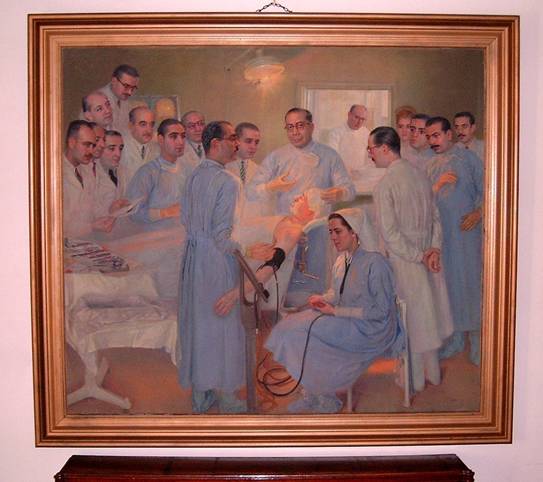
El célebre óleo del Soldato Pittore Roberto Fantuzzi, el maestro pintor que sirviendo como soldado en la segunda guerra mundial halló la fama por sus pinturas de los combatientes, fue rescatado a último momento por Santiago Carrillo del incendio del mobiliario del Instituto de Neurocirugía en la revolución de 1955. Luego debió permanecer largamente oculto. La jungiana estructura del cuadro representa la labor de la Cátedra e instituto universitario de Neurocirugía por medio de una tetrasomía. Centrada en el sufrimiento del paciente y el esfuerzo humano por remediarlo, la estructura pictórica revela así una cruz cuyo brazo horizontal marcan el cabo de la Sala de Operaciones Jesús Rodríguez y la instrumentadora Eva Iglesias, en los planos extremos del cuadro. El brazo vertical apiña, de izquierda a derecha, al neurocirujano Aldo Francisco Martino (elevado), algo más bajo el oftalmólogo Magin Diez, y aun más bajo el trío formado por el neurocirujano Ortiz de Zárate, el neurooftalmólogo Esteban Adrogué y el anátomopatólogo Manuel Prado. Algo más elevado que este se halla el neurocirujano Ramón Pardal (padre) y delante del mismo el neurocirujano Raúl Matera. Poco más arriba se ven, siempre de izquierda a derecha, el neurorradiólogo Manuel Zamboni y el neurocirujano Arturo Carrillo, este ubicado a la izquierda del paciente. Siguen, a la derecha del paciente cuyo sufrimiento ("cruz") y remedio relata pictóricamente el maestro Fantuzzi, el neurólogo Horacio G. Casté, Ramón Carrillo y, tras el ya mencionado Jesús Rodríguez en un plano posterior, el neurólogo Tomás Insausti, la secretaria de la Cátedra Sofía González, el neurocirujano Lorenzo Amezúa y quien ordenó y rescató la pintura, el neurocirujano Santiago Carrillo. Último en el fuste de la cruz es Miguel Ragone, décadas después gobernador de la provincia de Salta secuestrado y muerto por motivos políticos. Completóse el cuadro a comienzos de 1948, retocándolo su autor en 1949 para cambiar al neurocirujano emplazado a la izquierda del paciente, que originariamente era Manuel de Oribe. El maestro Fantuzzi asimismo retrató luego, en la Universidad Central de Venezuela y Hospital Universitario de Caracas, a los profesores de anatomía (1959: obra reproducida en la carátula en Plaza Izquierdo, F. y Plaza Rivas, F., "Doctores Venezolanos Médicos, in memorian", Fed. Médica Venezolana, Caracas; Gráficas Tao, 2004) y de clínica urológica (1957: óleo reproducido en línea, en http://www.urologiaaldia.com/historia/cronologia/venezuela/1940.asp ). Copyright © 2006 Electroneurobiología. La copia y redistribución no comercial de esta imagen por cualquier medio están permitidas bajo la condición de conservar esta noticia y la referencia completa a su publicación incluyendo la URL de esta revista.
![]() Ayer, hoy y mañana: el enfermo mental con organicidad ante la devastación del lazo social. Temas de psicología institucional, desmanicomialización y cambio social. Introducción al trabajo "Memorias de un Psiquíatra", por Santiago Héctor Valdés, cuyo texto completo se halla disponible abajo.
(Spanish)
Ayer, hoy y mañana: el enfermo mental con organicidad ante la devastación del lazo social. Temas de psicología institucional, desmanicomialización y cambio social. Introducción al trabajo "Memorias de un Psiquíatra", por Santiago Héctor Valdés, cuyo texto completo se halla disponible abajo.
(Spanish)
![]() Santiago Héctor Valdés, "Memorias de un Psiquíatra". Anécdotas de la vida de hospicio y avatares del ejercicio de la psiquiatría (Spanish).
Santiago Héctor Valdés, "Memorias de un Psiquíatra". Anécdotas de la vida de hospicio y avatares del ejercicio de la psiquiatría (Spanish).
Puede obtener un archivo .PDF (700 kB:
recomendado) o .DOC (575 kB)
para imprimir estos dos trabajos.
![]() Ramón Carrillo, La guerra bacteriológica. La guerra no resulta del hambre, la miseria o las necesidades, sino, al contrario, de la abundancia de las riquezas materiales. (Spanish).
Ramón Carrillo, La guerra bacteriológica. La guerra no resulta del hambre, la miseria o las necesidades, sino, al contrario, de la abundancia de las riquezas materiales. (Spanish).
ESCATOLOGÍA POSTMORTALIDAD EL PUESTO DE LA HUMANIDAD EN LO REAL
(ESCHATOLOGIE LEBEN NACH DEM TOD DIE STELLUNG
DES MENSCHEN IM KOSMOS)
 A Palindrome: Conscious Living Creatures as Instruments of Nature; Nature as an Instrument of Conscious Living Creatures. Cuando tanto materialistas como idealistas nos describen todas las cosas tomadas en conjunto, hoy los científicos les podemos replicar: "Sé verlas al revés" (English).
A Palindrome: Conscious Living Creatures as Instruments of Nature; Nature as an Instrument of Conscious Living Creatures. Cuando tanto materialistas como idealistas nos describen todas las cosas tomadas en conjunto, hoy los científicos les podemos replicar: "Sé verlas al revés" (English).
[Nota para distraídos: "Sé verlas al revés" es también un palindrome]
SUMMARY: It is reported a palindromic relationship between the astrophysical-biological evolution and the experiencing beings in it. The issue is related with ascertaining if nature is an instrument (as merely a means), instead of having any intrinsic value (an end in itself); and, likewise, if conscious beings are merely a means (one to entropize nature faster) or either possess any intrinsic value. Two possibilities are deemed not indifferent in this regard: either reading the whole set of empirically-found realities or facts makes sense in both directions (palindromic reading of nature), or, rather, that sense can only be ascribed to such a set by reading it in some single direction. A single direction means reading nature in a classic, materialist or idealist sense; both directions' sense means a mirror or reciprocal functionalization, in which each of both realities (mind-possessing living creatures, and astrophysical-biospheric evolution) uses for its own ends the reality that uses it as a means. At stake, therefore, is establishing if axiological readings ascribing a sense to what is found going on in the universe can be obtained in both directions, or not. On this alternative, it is claimed, pivots the possibility of ascertaining, e.g., whether conscious beings are worthier than non-conscious nature, or not - a topic assumed consequential for philosophy, ecology, ecofeminism and biocentric environmental movements, and ethics.
You can download a .PDF (675 kB: recommended) or .DOC (310 kB) file for printing this work.
 Ramón Carrillo: Teoría Geral do Homem (Português). Este Programa para su curso de 1956 sobre la Teoría General del Hombre en la Facultad de Derecho de la Universidad de Belém do Pará, Brasil, contiene la idea definitiva lograda por Ramón Carrillo acerca de qué es una persona humana y por qué respetarla. Incluye asimismo indicios acerca de un importante progreso conceptual cuyo marco Carrillo procuraba delinear cuando sufrió el ataque cerebral que semanas después le costó la vida. Para aportar material historiográfico, contexto, y amplificación a algunos puntos de este conciso texto carrilliano desconocido fuera de nuestra tradición neurobiológica, aquí se publica el mismo precedido por el siguiente estudio preliminar:
Ramón Carrillo: Teoría Geral do Homem (Português). Este Programa para su curso de 1956 sobre la Teoría General del Hombre en la Facultad de Derecho de la Universidad de Belém do Pará, Brasil, contiene la idea definitiva lograda por Ramón Carrillo acerca de qué es una persona humana y por qué respetarla. Incluye asimismo indicios acerca de un importante progreso conceptual cuyo marco Carrillo procuraba delinear cuando sufrió el ataque cerebral que semanas después le costó la vida. Para aportar material historiográfico, contexto, y amplificación a algunos puntos de este conciso texto carrilliano desconocido fuera de nuestra tradición neurobiológica, aquí se publica el mismo precedido por el siguiente estudio preliminar:
 Mario Crocco - Evolución de la antropología filosófica de Ramón Carrillo: la etapa definitiva (Castellano).
Mario Crocco - Evolución de la antropología filosófica de Ramón Carrillo: la etapa definitiva (Castellano).
You can download a .PDF (2 MB: recommended) or .DOC (1 MB) file for printing this work.
PROCEDIMIENTO
![]() Los "Cortes de Jakob": Christofredo Jakob: La técnica moderna en la autopsia del cerebro. Exposición clara y didáctica de la técnica, por su autor, con ilustraciones y la explicación de sus fundamentos (Spanish).
Los "Cortes de Jakob": Christofredo Jakob: La técnica moderna en la autopsia del cerebro. Exposición clara y didáctica de la técnica, por su autor, con ilustraciones y la explicación de sus fundamentos (Spanish).
Puede leer, imprimir o
guardar en su disco duro esta investigación en versión .PDF (2 MB:
recomendada) o .DOC (1,6 MB).
Estos artículos cubren sólo algunos de los temas que se explorarán en este documentado sitio de Red, por ahora en construcción. Abrirá completo en unos meses.
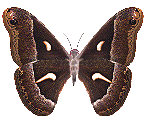
These texts cover just some of the topics that will be explored at this extensive website which is now under construction. In a few months it will open in full.
Introducción (English
opening below): Mientras las
neurociencias, como rama de la investigación biomédica, son una herramienta
para combatir la enfermedad, como rama de las humanidades son una herramienta
para sondear la condición humana. Por ser ambas cosas, las neurociencias
aportan una descripción de la gente cuya veracidad se tiene por fundada en la
eficacia de esas neurociencias para sugerir remedios contra las enfermedades.
Esta eficacia hace creíble su descripción. Tal como cualquier autorretrato
creíble, asimismo la autodescripción neurocientífica induce a la gente a
aceptar o rechazar ciertas perspectivas sociales y medidas de gobierno por
donde la descripción neurocientífica de la gente también se torna herramienta
política. Ello ocurre de modo similar a como algunos intereses se benefician y
otros se perjudican con las ideas acerca de la condición humana propagadas por,
digamos, el subjetivismo de The Matrix o la negación gnosticista por Harry
Potter de ciertos límites en nuestras capacidades. La electroneurobiología es
la parte de las neurociencias que estudia dentro del tejido cerebral las
fluctuaciones, orquestadas biológica o psicológicamente, de cierto campo
físico, a saber el campo eléctrico, que ya es bastante bien conocido por otras
áreas de la tecnociencia contemporánea. Este campo eléctrico se superpone con
otro campo físico y las fluctuaciones de ambos se acoplan intimamente; el
segundo es aquél campo físico en cuyas diferentes parcelas la gente encuentra
más precisamente localizados en la naturaleza sus intercambios causales. Por
cuanto aún no podemos manipular ni sondear de otra manera este último campo
tal como también ocurre, por ejemplo, con el campo gravitatorio nuestro único
acceso a este segundo campo es el acople electroneurobiológico con el mismo.
Debido a esta circunstancia la electroneurobiología se torna cardinal para los
roles científico, humanístico y político para los que se instrumentan las
neurociencias. La revista Electroneurobiología, fundada en 1993 como
suplemento especializado de la Folia Neurobiológica Argentina iniciada
en 1939 por C. Jakob, cubre temáticamente todos estos roles de su disciplina:
tanto las cuestiones humanísticas cuanto las atingentes a las ciencias
biomédicas y a la pragmática sociopolítica.
Este sitio de red presenta versiones completas y de
acceso público de una selección de los artículos de Electroneurobiologia.
Estos pues tratan los temas o áreas aludidos por las palabras clave listadas al
pie de esta Introducción. Algunas de esas palabras están en diversos idiomas,
tal como se las emplea en ciertos artículos. Deseamos y esperamos ser capaces
de presentar los trabajos de investigación con al menos los resúmenes en los
idiomas oficiales de los países del Mercosur castellano, portugués y guaraní
así como en otros lenguajes tradicionales de la ciencia como francés, alemán e
inglés y algunos otros de culturas no occidentales. Pero mantener en línea Electroneurobiologia
no es ni el único ni el principal esfuerzo en que estamos comprometidos los
científicos de este Laboratorio. Será bienvenida toda ayuda para traducir hacia
cualquier idioma los resúmenes o, como ideal, los artículos. Incluso esbozos
preliminares de esas traducciones serían muy útiles, ya que nosotros luego
podríamos procurar refinarlos. Si usted aprecia la importancia de estos
resultados investigativos y puede y quiere ayudar a comunicarlos con traducciones
o esbozos de ellas hacia cualquier idioma, por favor contáctenos en el correo
electrónico indicado arriba.
Nota sobre neuromercadeo ("neuromarketing") y neuroeconomía (agregada en diciembre de 2005): Cierto número de lectores llegan ahora a esta revista en búsqueda de ideas técnicas útiles para juzgar acerca del neuromercadeo y la neuroeconomia. Mientras que no nos es posible dedicar los esfuerzos adecuados para esclarecerles las insostenibles simplificaciones (a veces llamadas "neuromacaneo", neurobabble) rampantes en la mayoría de los tratamientos de dichos temas, puede serles útil apuntar aquí una breve evaluación, a guisa de conclusión. Varios artículos de esta revista sirven a clarificar por qué las imágenes de resonancia magnética nuclear funcional, o fMRI, que miden cambios del flujo sanguíneo cerebral para determinar la intensidad promedio de la actividad que genera ondas electroencefalográficas en diferentes áreas del cerebro, no pueden penetrar en el psiquismo.
La fMRI, antes bien, lleva a cabo solamente lo mismo que realiza la observación con moderno instrumental de cualquier otra conducta; esto es, describe con precisión algún aspecto de dicha conducta corporal, de modo de permitir al observador conjeturar mejor, siempre en base a su experiencia, la motivación psicológica de tal conducta – si es que cabe suponerle alguna. Las ondas eléctricas del tejido cerebral, lejos de constituir "la materia del pensamiento humano", son los "movimientos" del estado eléctrico cerebral – similares a los movimientos de un miembro, que también pueden ser voluntarios o involuntarios – por los cuales el órgano cerebral reacciona bien sea a ocurrencias extramentales o bien a iniciativas mentales.
Los psiquismos siguen siendo privados: persuadibles, quizás, pero incompartibles e inauguradores de cadenas causales originadas por decisiones privadas. En la precisa medida en que la investigación del consumo ("consumer research") impropiamente describe a los psiquismos como si fueran puramente reaccionantes, a las memorias como si fueran marcas en el cerebro, y a la atención como si solamente fuera movida por su objeto atendido, la maniobra de enseñar por todo el globo a las empresas cómo comunicarse eficaz e instantáneamente con el "botón de compra" ("buy button"), esa "parte del cerebro donde la decisión de adquirir tiene lugar", y así poner a los compradores en un estado de "dopamina alta" que desactive el "hemisferio analítico del cerebro", es sólo una manera de que tales enseñantes se construyan laboratorios de fachada para seguir sacándole dinero a las empresas – no de que estas últimas aumenten sus ingresos.
![]()
English opening: While neuroscience, as a branch of biomedical research, is a tool for
coping with disease, as a branch of humanities it is a tool for fathoming the human
condition. And because of its being both, neuroscience conveys a description of
people whose truth is held grounded upon the neurosciences effectiveness to
suggest remedies for disease. This effectiveness makes it believable. Like any
believable selfdepiction, the neuroscientific selfportrait induces people to
agree or disagree with specific societal views and governmental measures
whereby the neuroscientific description of people also becomes a tool for
politics. It happens in a way similar as some interests benefit and others are
countered by ideas about the human condition vehicled through, say, The
Matrixs subjectivism or Harry Potters gnosticist denial of certain
limits to ones powers. Electroneurobiology is the part of neuroscience
studying within the brain tissue the biologically or psychologically
orchestrated fluctuations of certain physical field, namely the electric field,
that stands quite well known from other areas of contemporary technoscience.
The electric field overlaps and is intimately coupled with another physical
field, into different parcels of which field people find their causal
interactions the most immediately localized in nature. Since we cannot yet handle
or otherwise probe this later field as it too happens, for example, with
regard to the gravitatory one our sole current access to this later field is
the electroneurobiological coupling with it. Thereby electroneurobiology
becomes pivotal for the scientific, humanistic and political roles accomplished
by neuroscience. The journal Electroneurobiologia, founded in 1993 as a
specialized supplement of the 1939-started Folia Neurobiólogica Argentina,
covers all these roles of its branch of learning: the humanistic roles as well
as the ones in biomedical science and political affairs.
This website presents open-access, full-text versions of selected
articles of Electroneurobiologia,
thus dealing with the themes or areas referred to by the keywords recorded
at the end of this notice some are non-English words, as they are used in
some articles. We wish and hope to be able of presenting the research papers
with at least the abstracts in the official languages of the Mercosur countries
Spanish, Portuguese and Guarani as
well as other traditional languages of Western science such as French, German
and English and some others of non-Western cultures. Yet keeping Electroneurobiologia
online is not the sole or the main effort in which the Laboratorys scientists
are engaged. Any help to translate the abstracts or, ideally, the articles into
any language is welcome. Even preliminary drafts of such traslations are very
useful, as we can then procure to refine them. If you appreciate the importance
of these research results and can and wish help with translations or drafts
into whatever language, please contact us at the above e-mail.
Note on neuromarketing and neuroeconomics (added in December, 2005): A number of people nowadays come to this journal looking for technical insights useful to judge neuromarketing and neuroeconomics. While we cannot devote efforts to clarify for such special-purpose readers the untenable simplifications (not seldom called "neurobabble", neuromacaneo) rampant in most treatments of those fields, a brief conclusive assessment may be of help and is in order here. Several articles of this journal show why functional magnetic resonance imaging, or fMRI, which measures changes in blood flow in order to ascertain the average intensity of brain-wave generating activity in different areas of the brain, cannot delve into the mind.
fMRI rather does just the same as the instrumental observation of any other behavior, i.e. accurately depicts some aspects of this bodily behavior so as to allow the observer to guess its psychological motivation – if any at all. Brain waves, far from being "the stuff of human thought", are the "movements" of the brain's electrical state – like as the movements of a limb, which also may be voluntary or involuntary – whereby the brain organ reacts either to extramental events or to mental initiatives.
Minds remain private: persuasible, maybe, but unshareable and inaugurating causal chains on private decisions. Inasmuch as consumer research improperly describes minds as purely reactive, memories as cerebral marks, and attention as driven solely by the object, the endeavor, of teaching companies around the world how to communicate strongly and instantly to the "buy button", that "part of the brain where the purchase decision takes place", and causing the 'analytical side to fall away' by putting shoppers into a "high dopamine" state, is a way for the teachers to build facade laboratories and go on making money from the companies – not for the latter to increase revenues.
[Prof. Mariela Szirko
cuida estas páginas/cares of these pages.]
![]()


